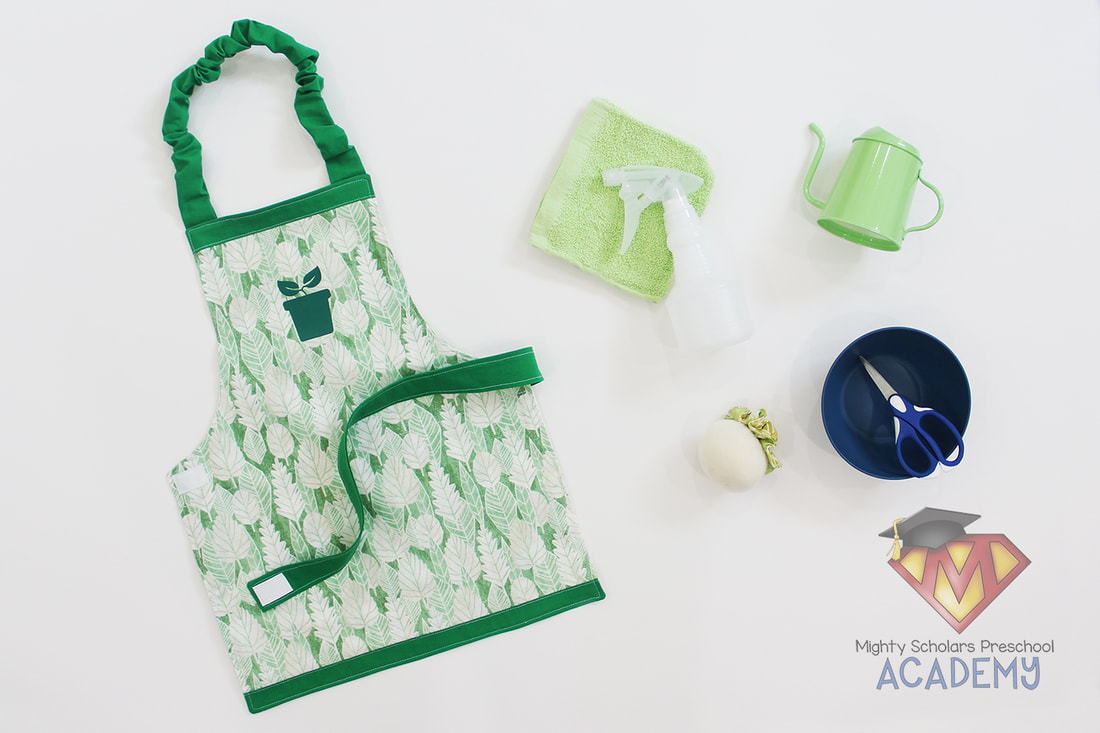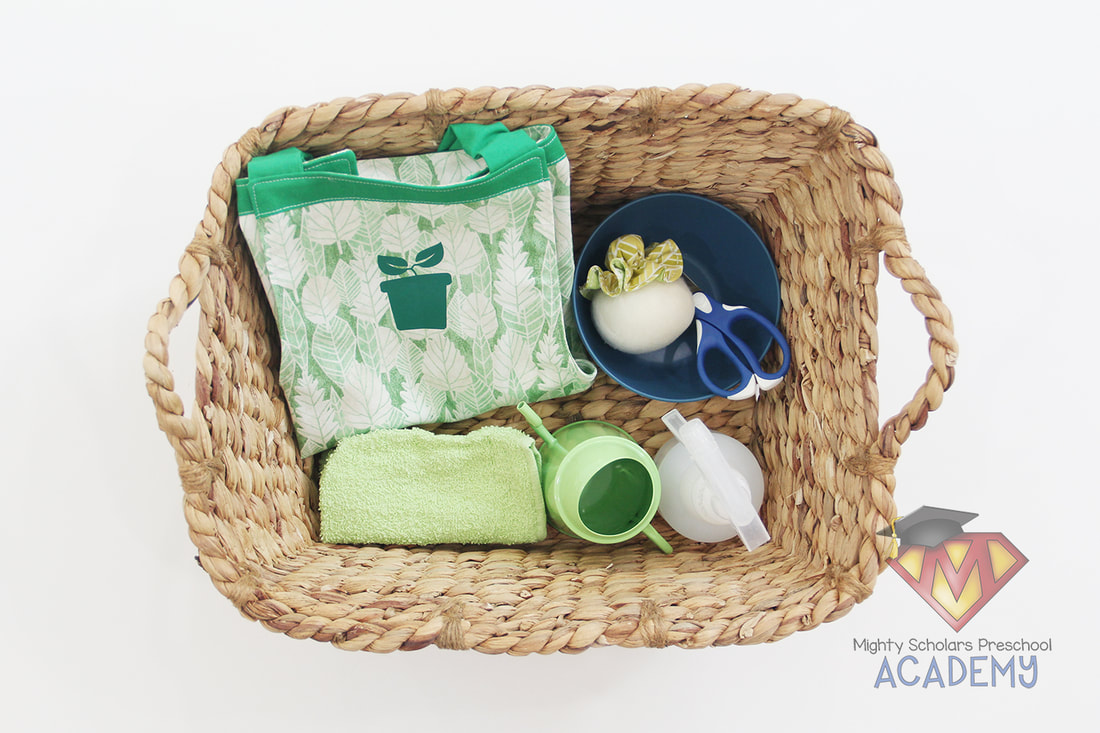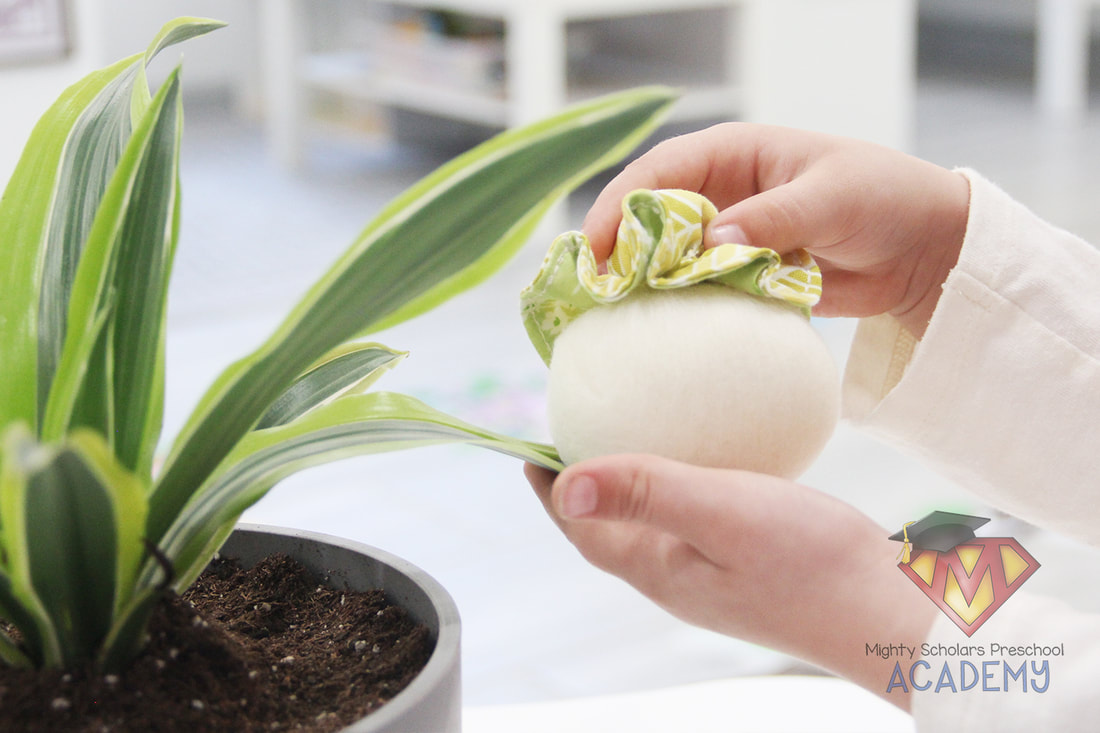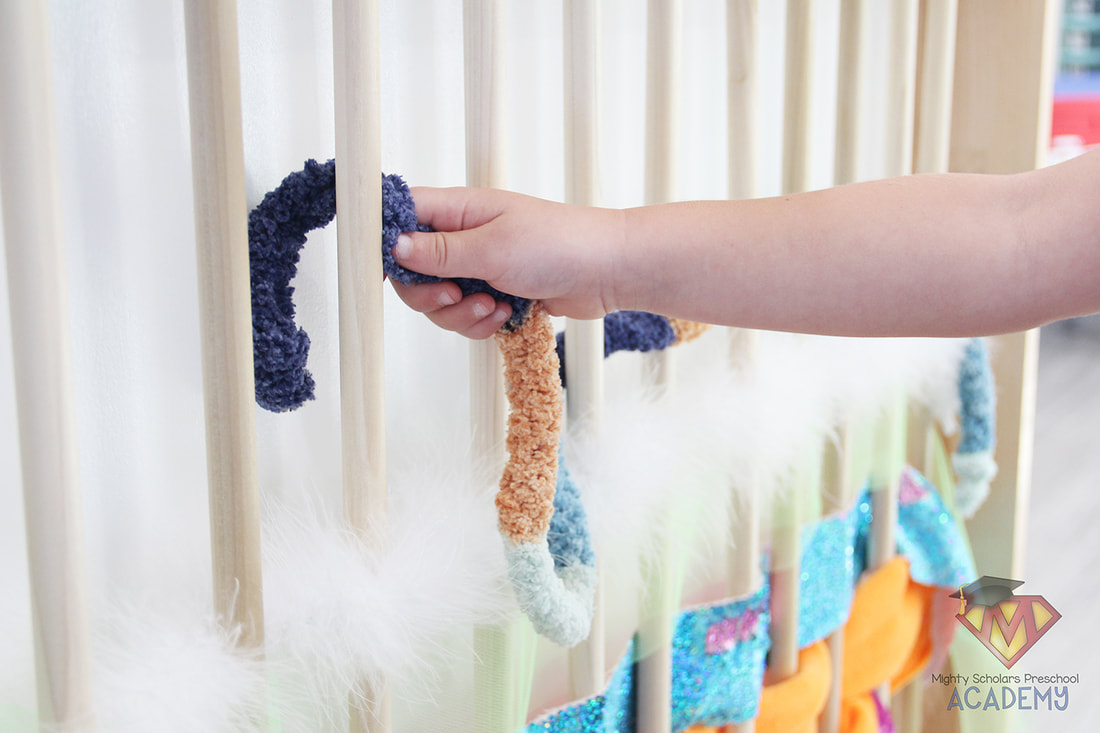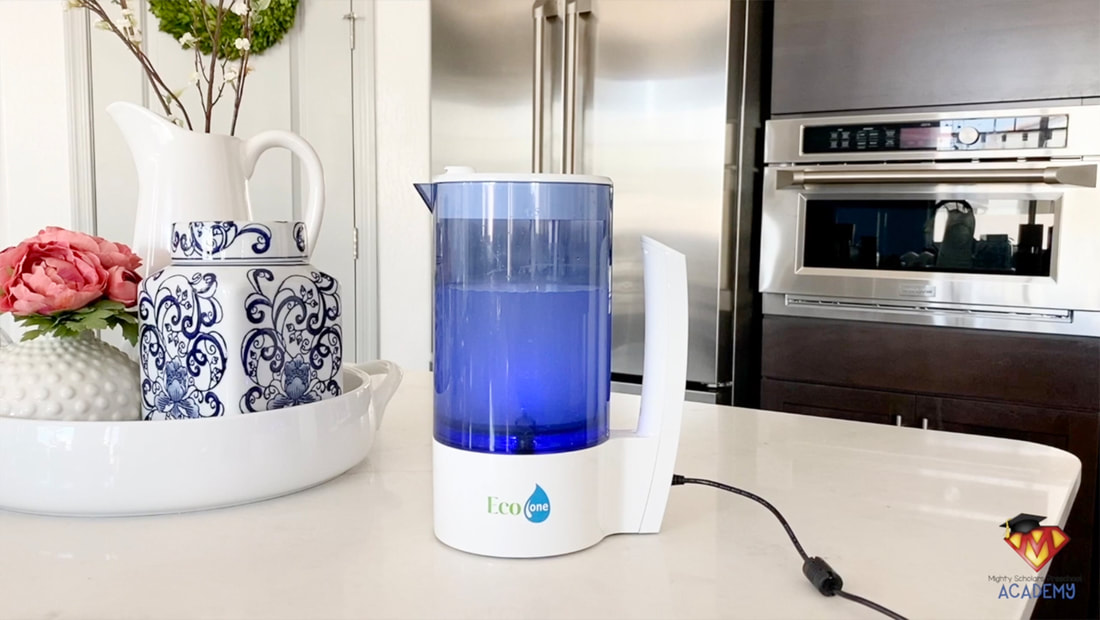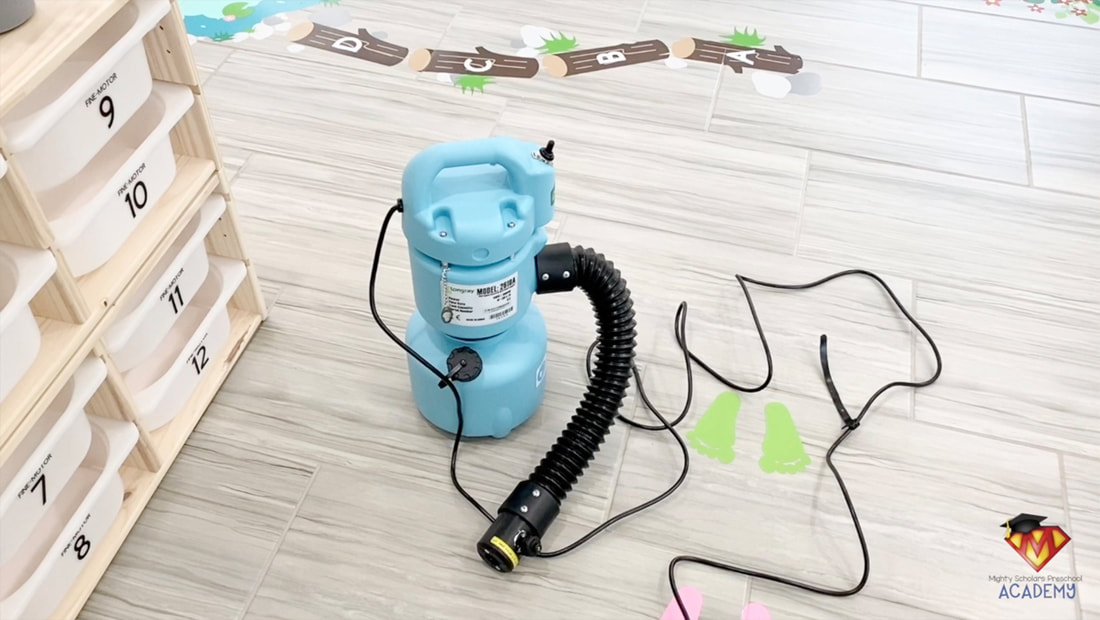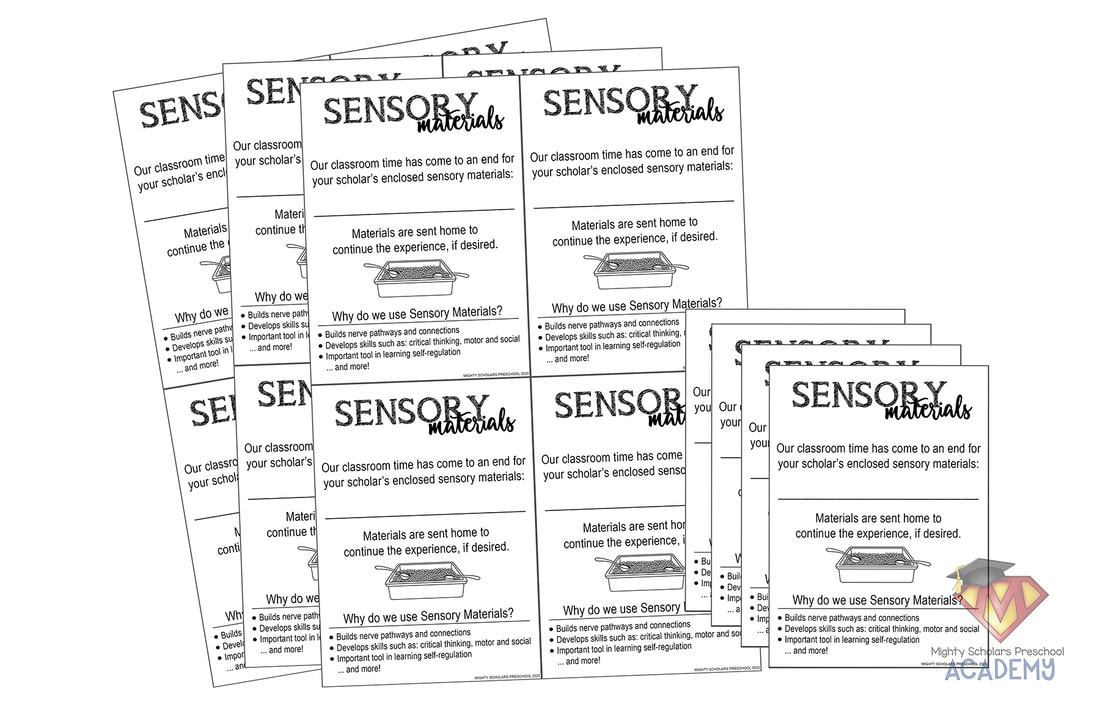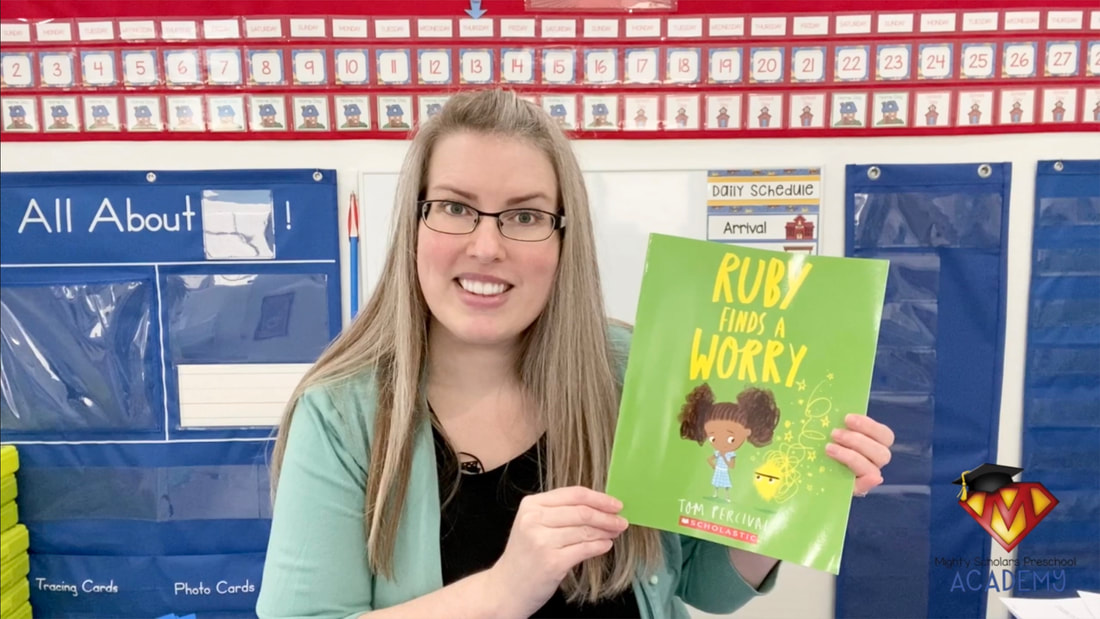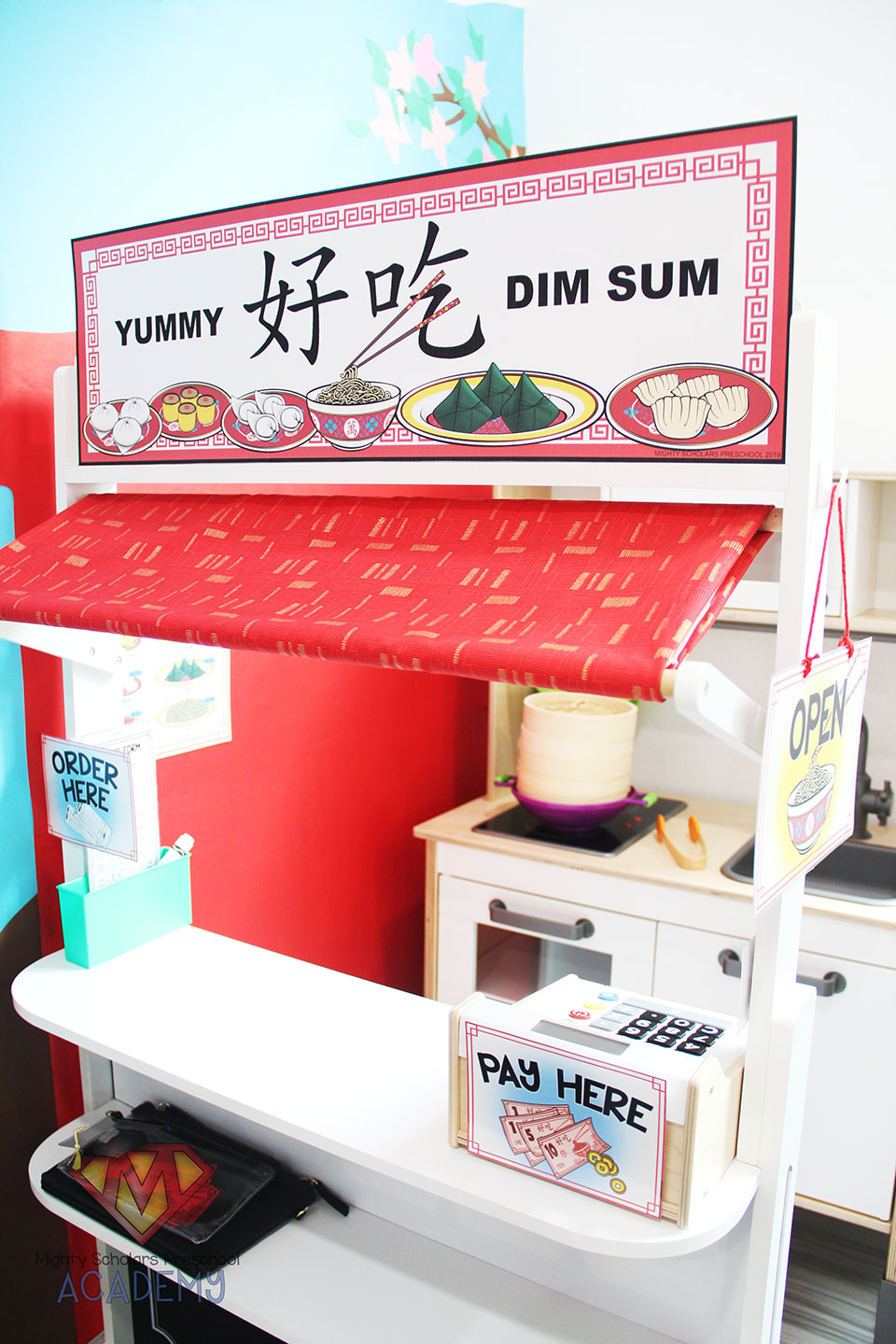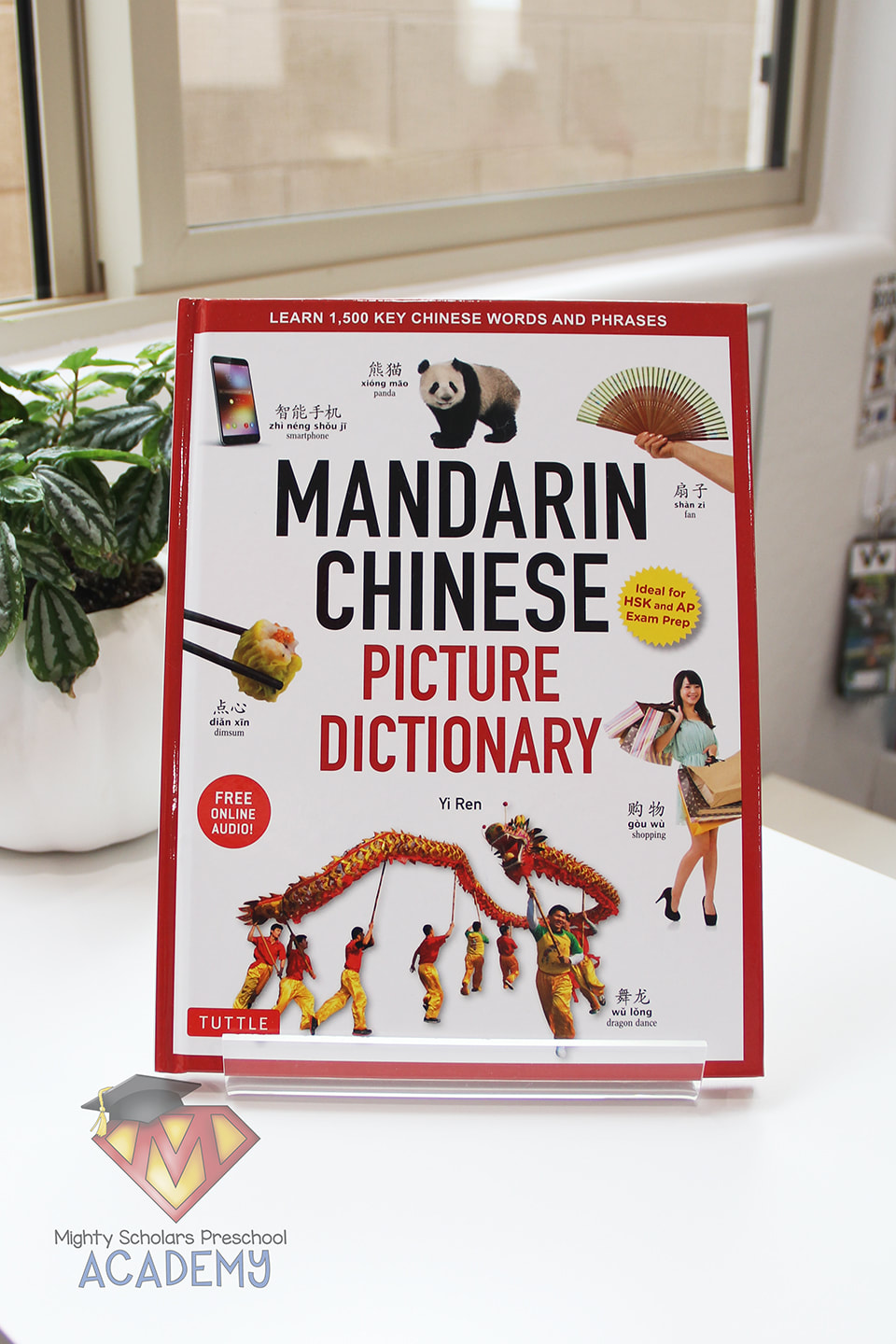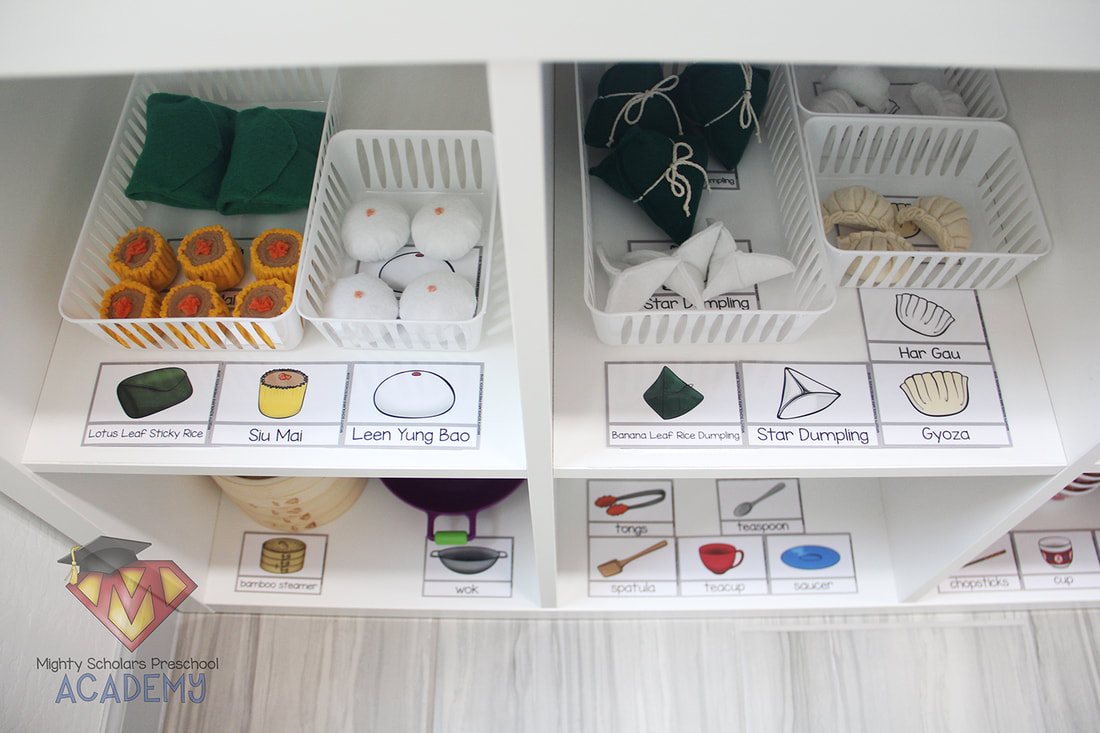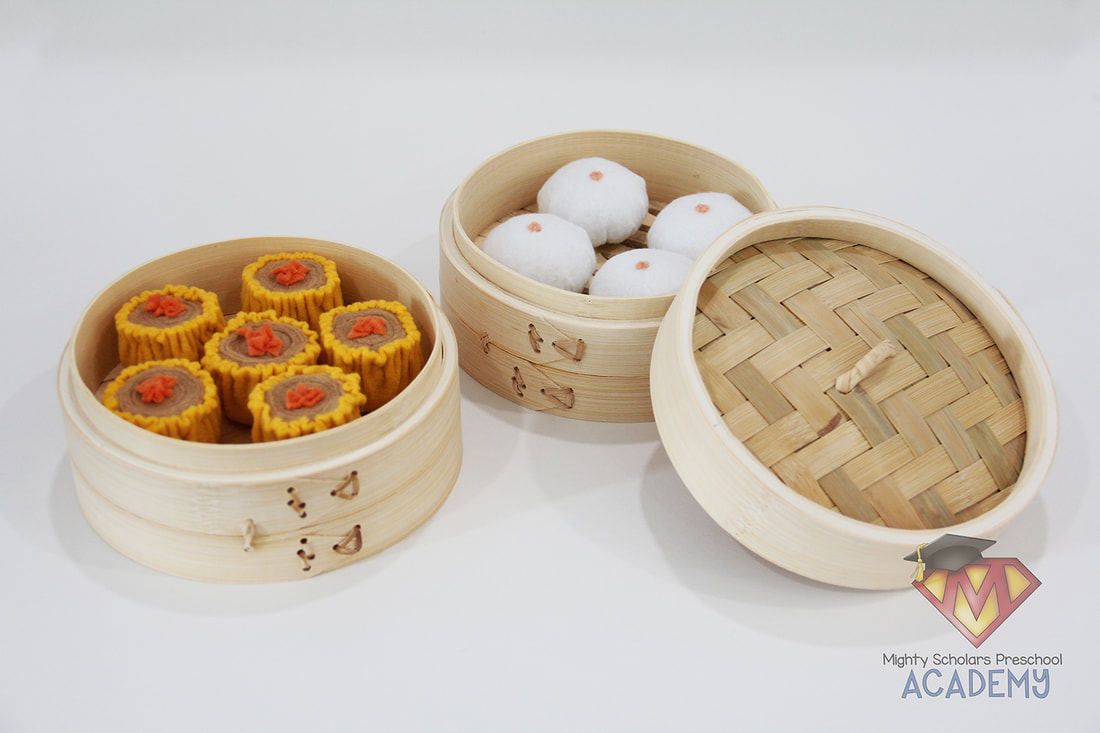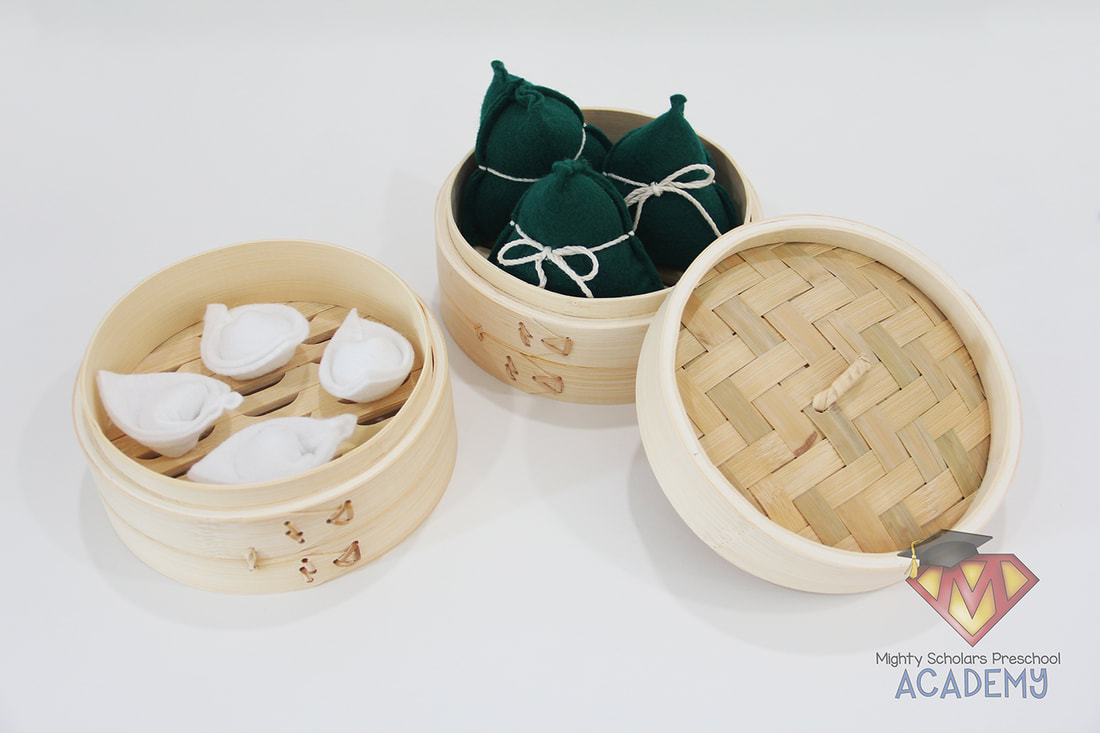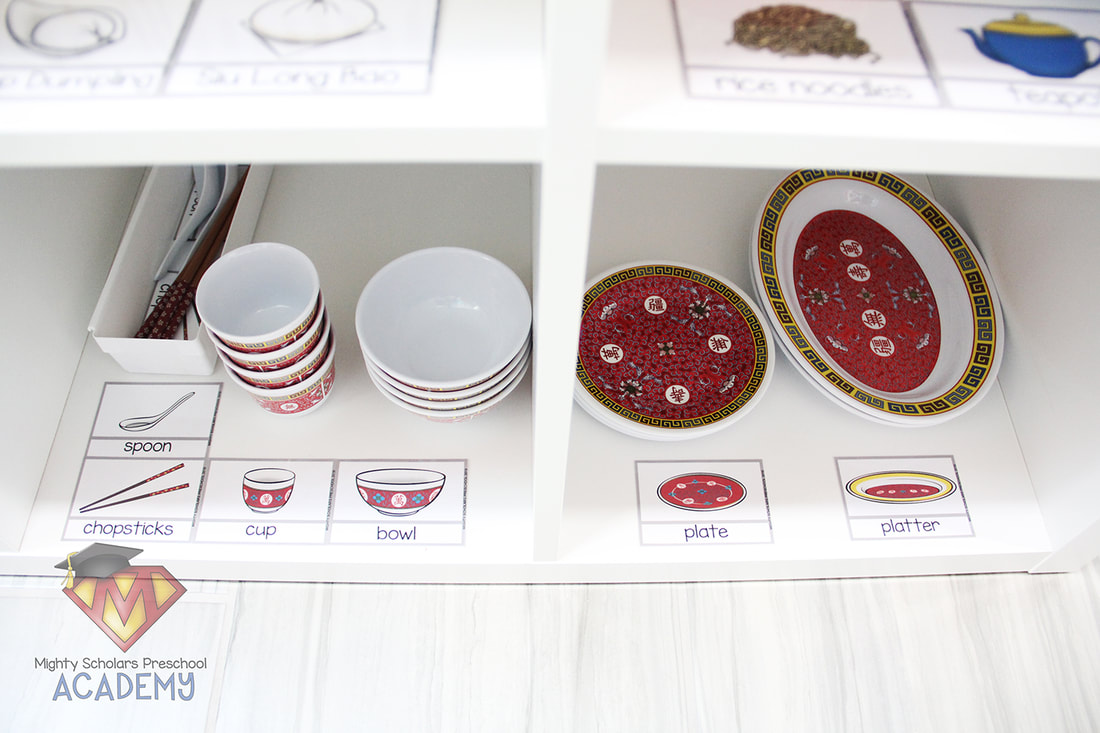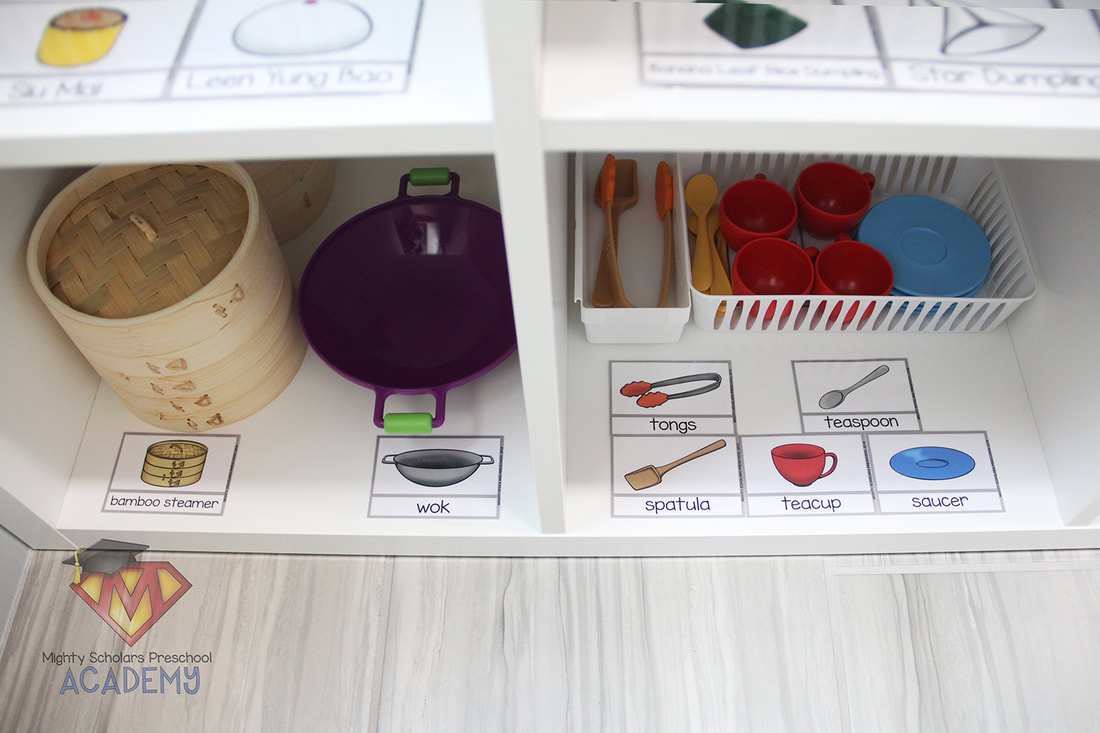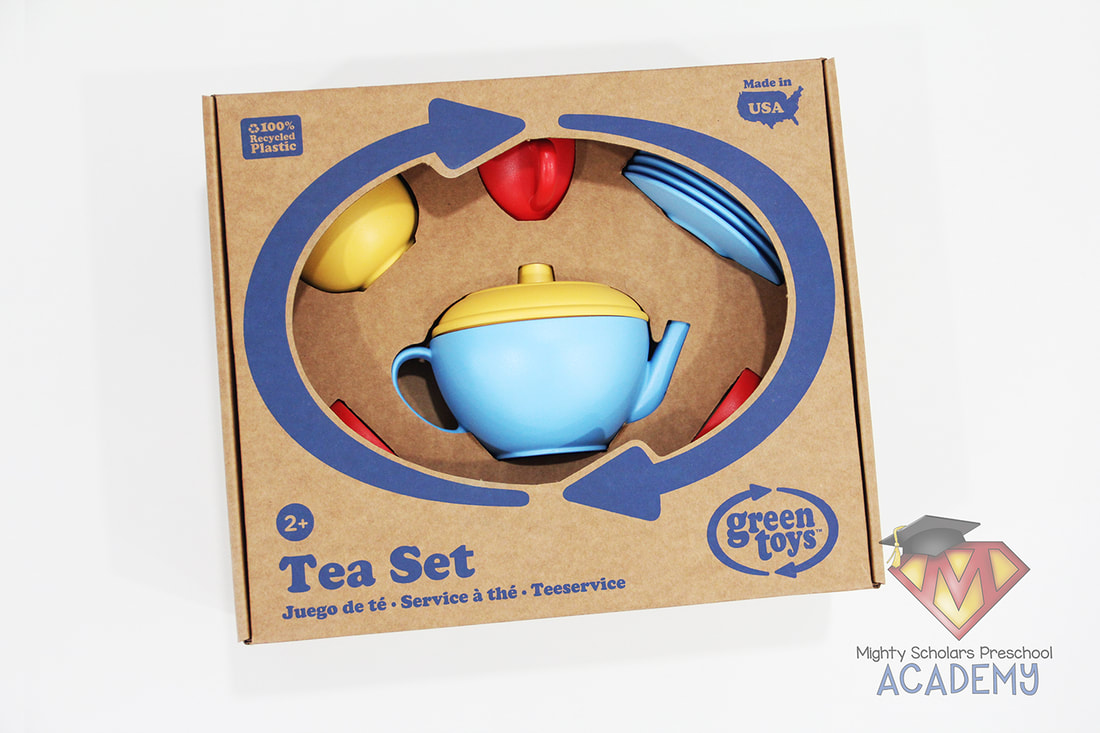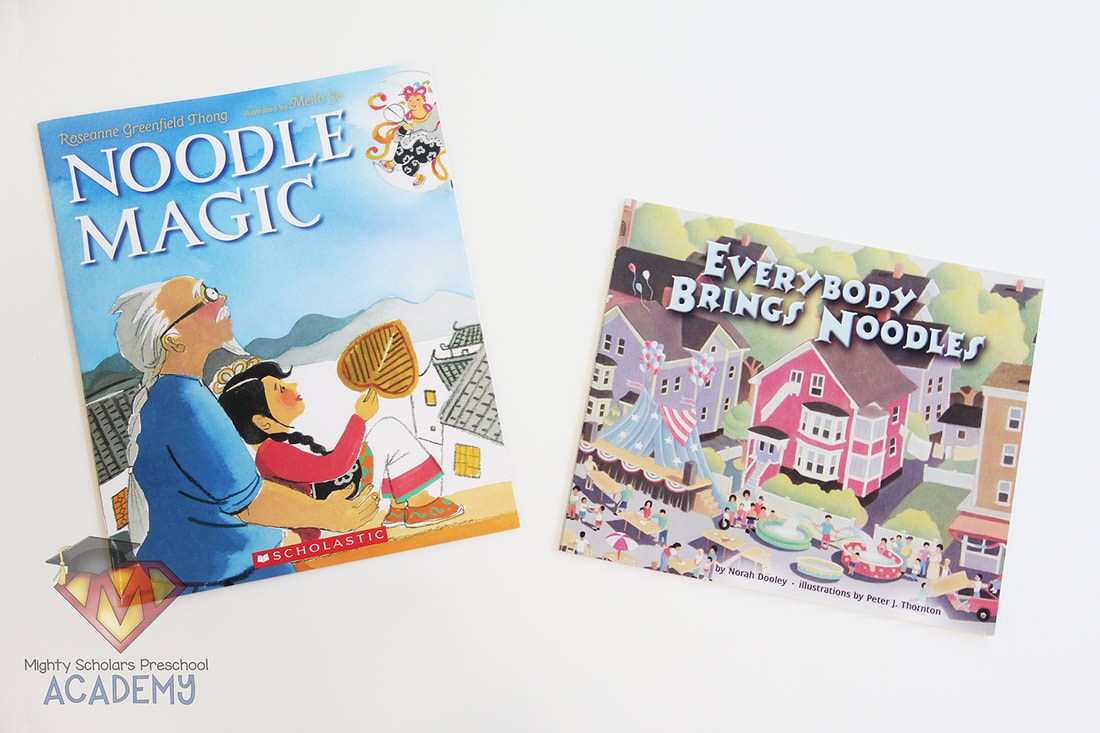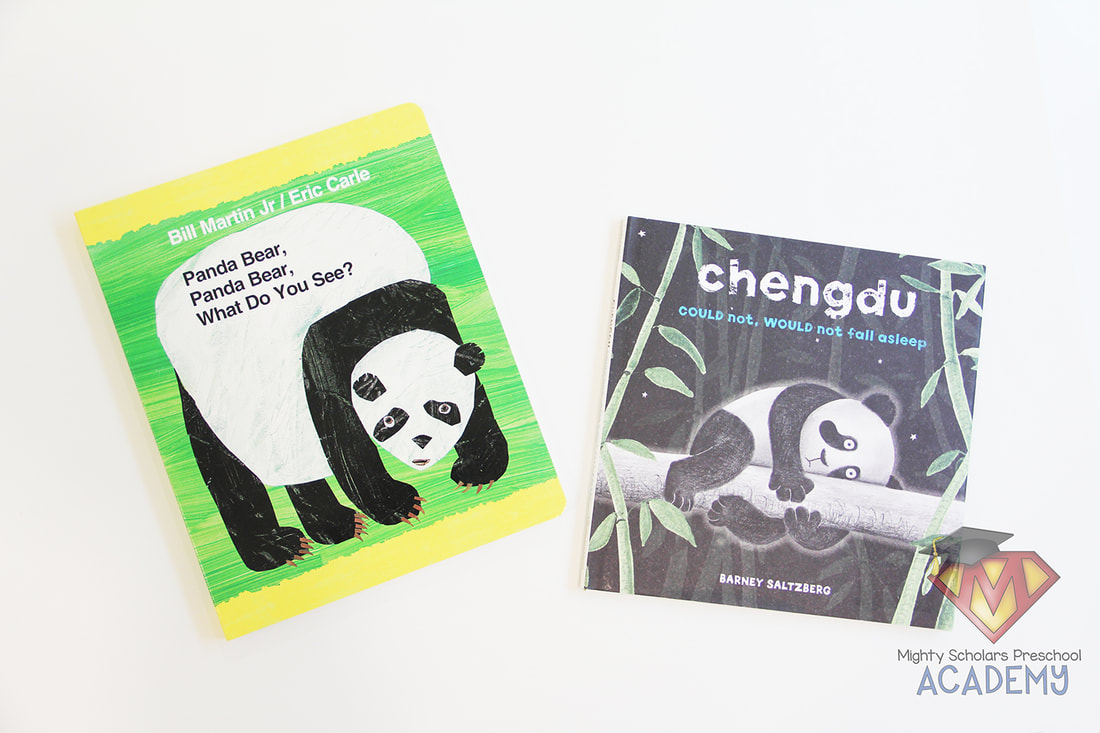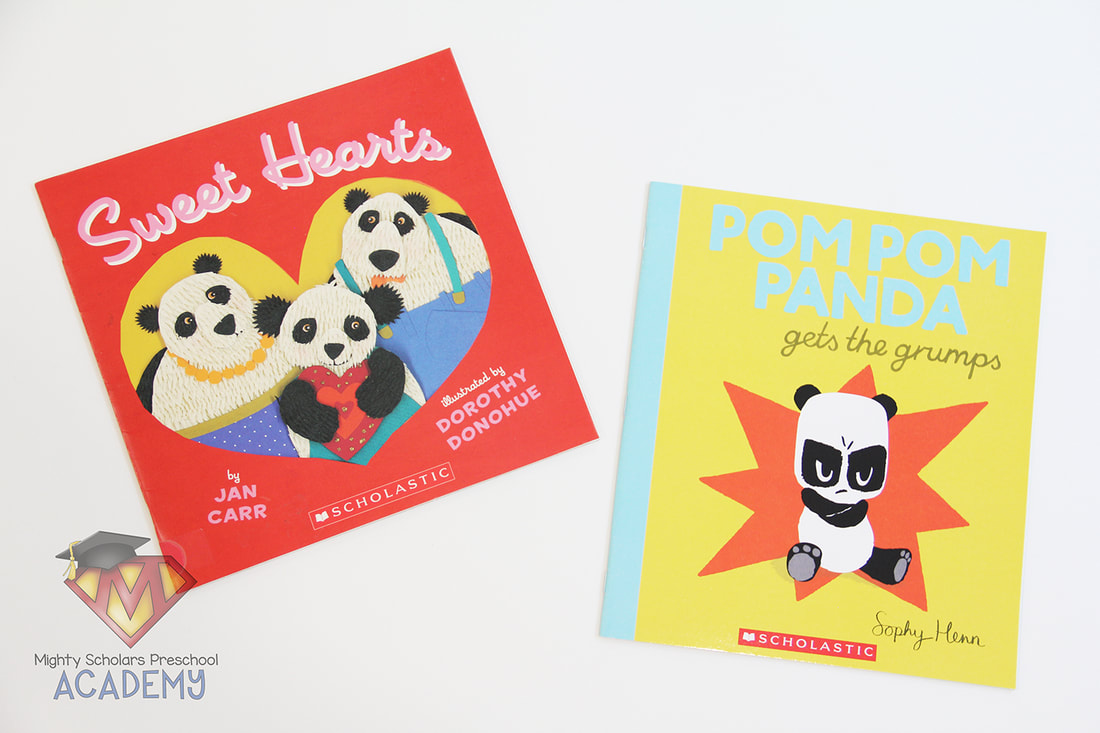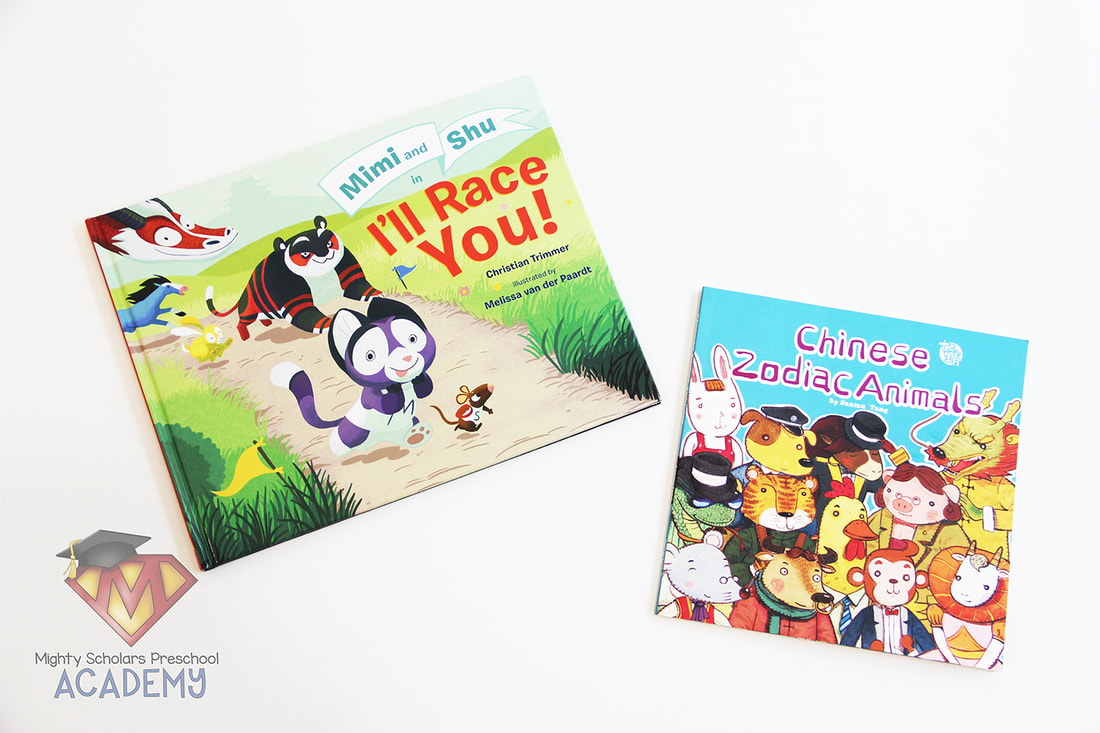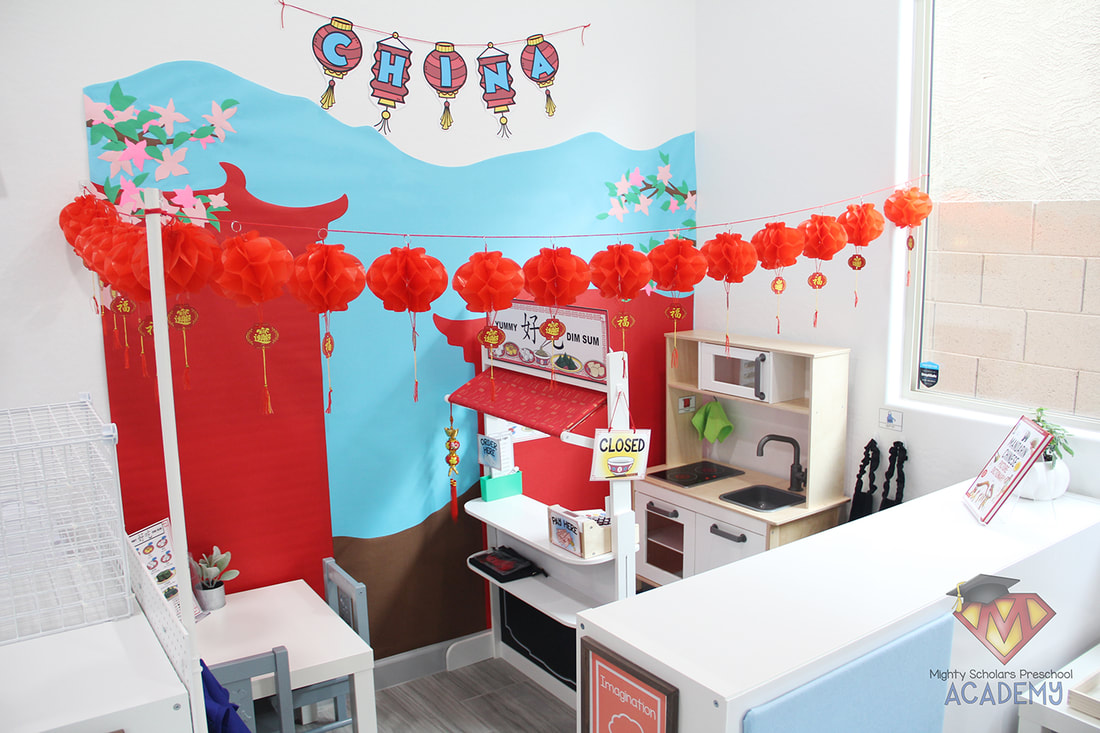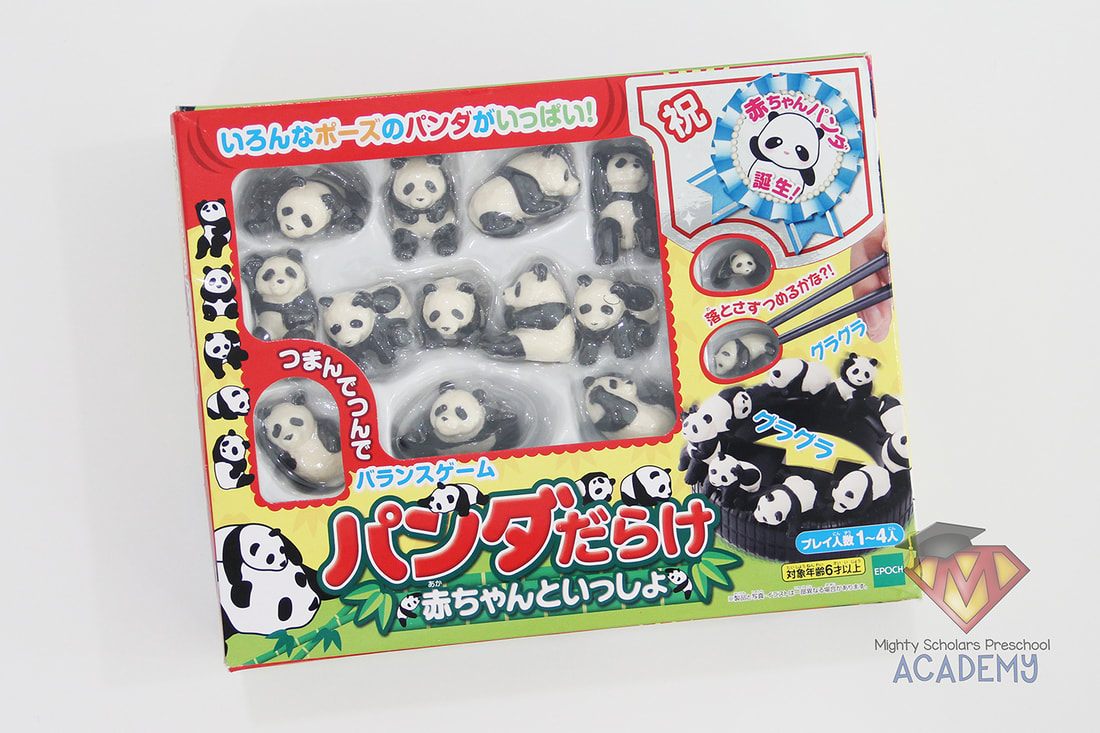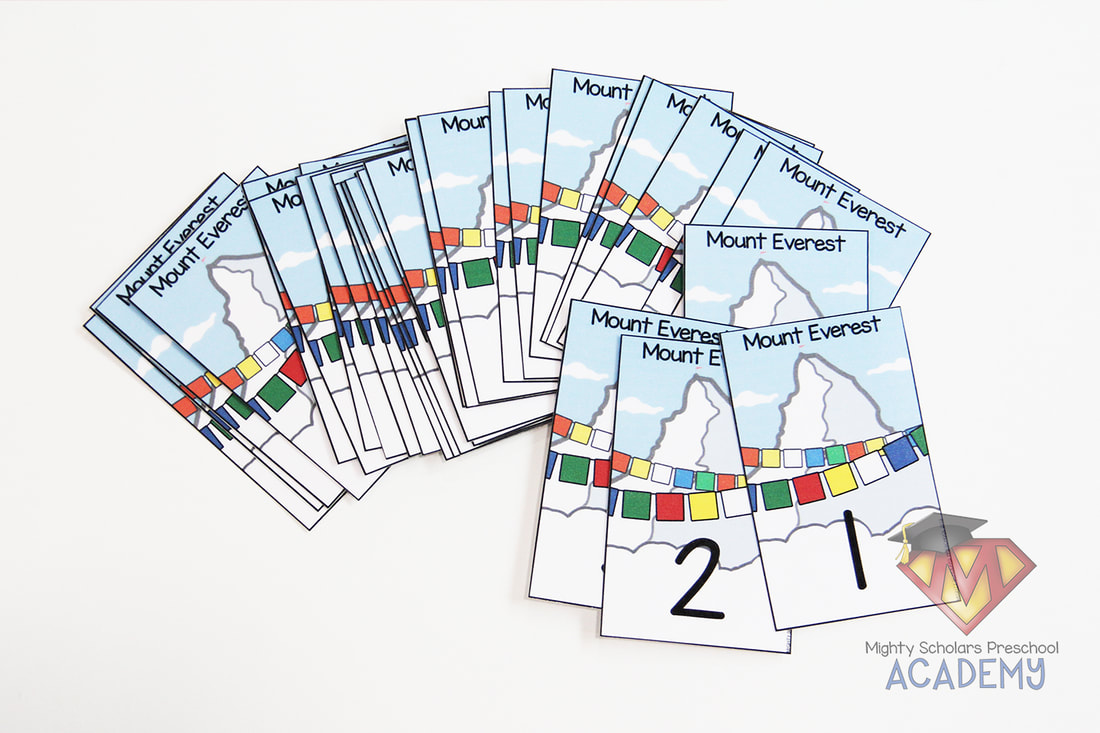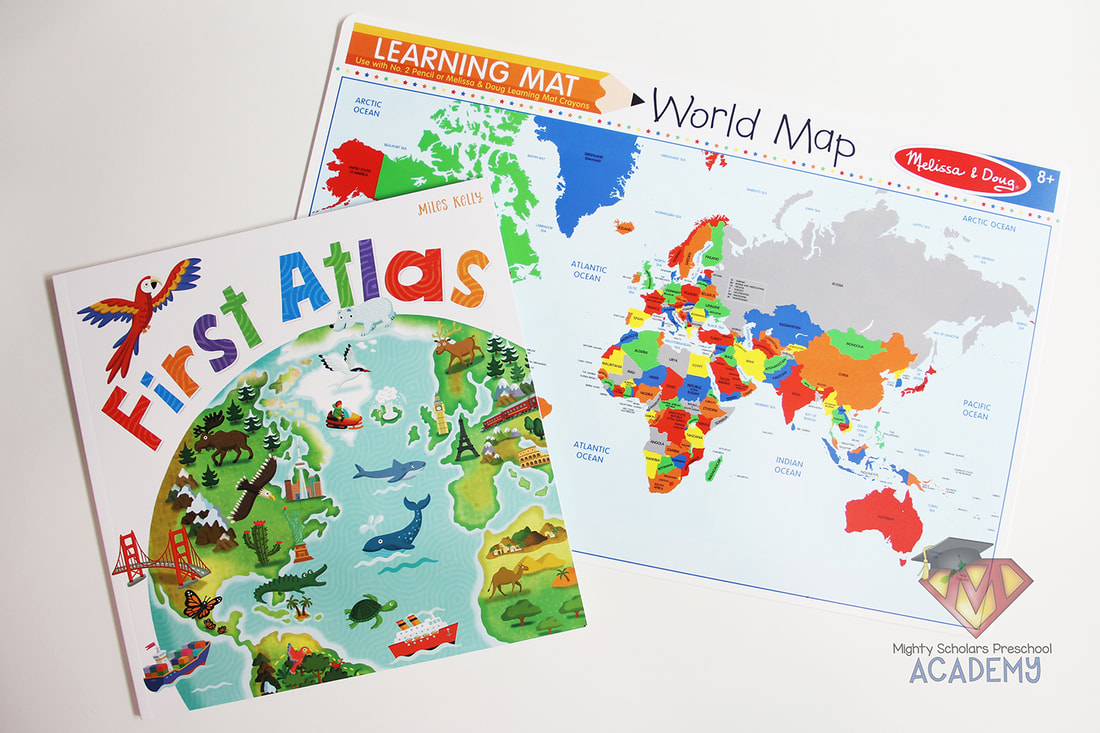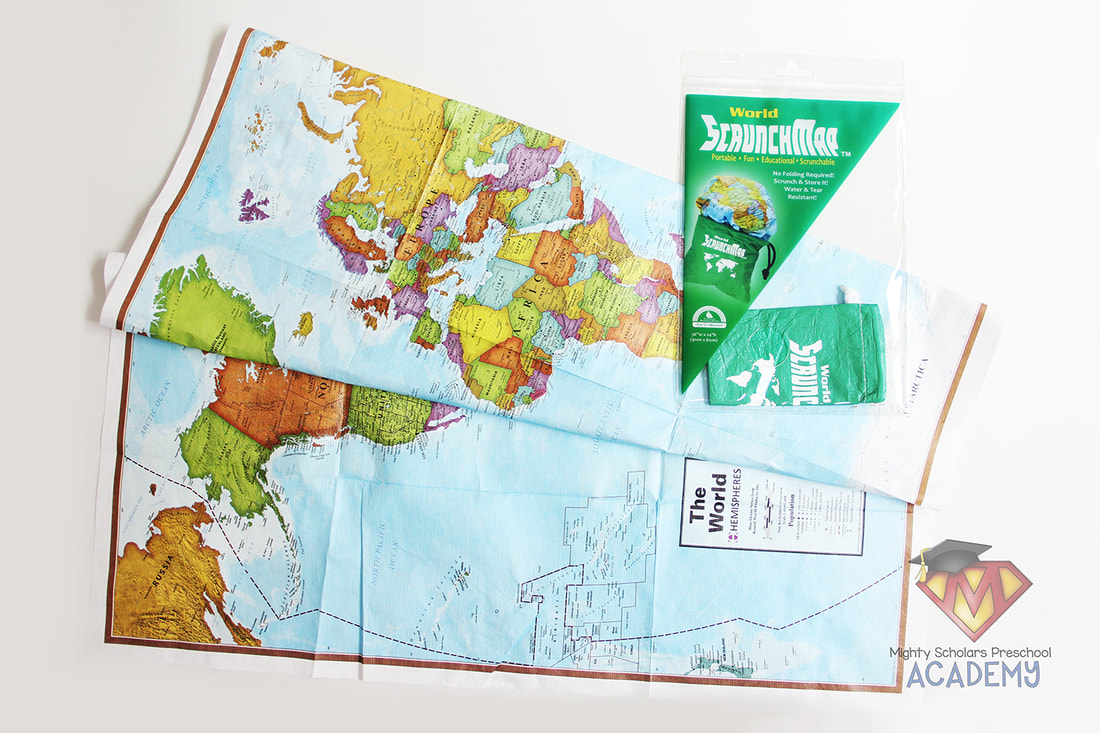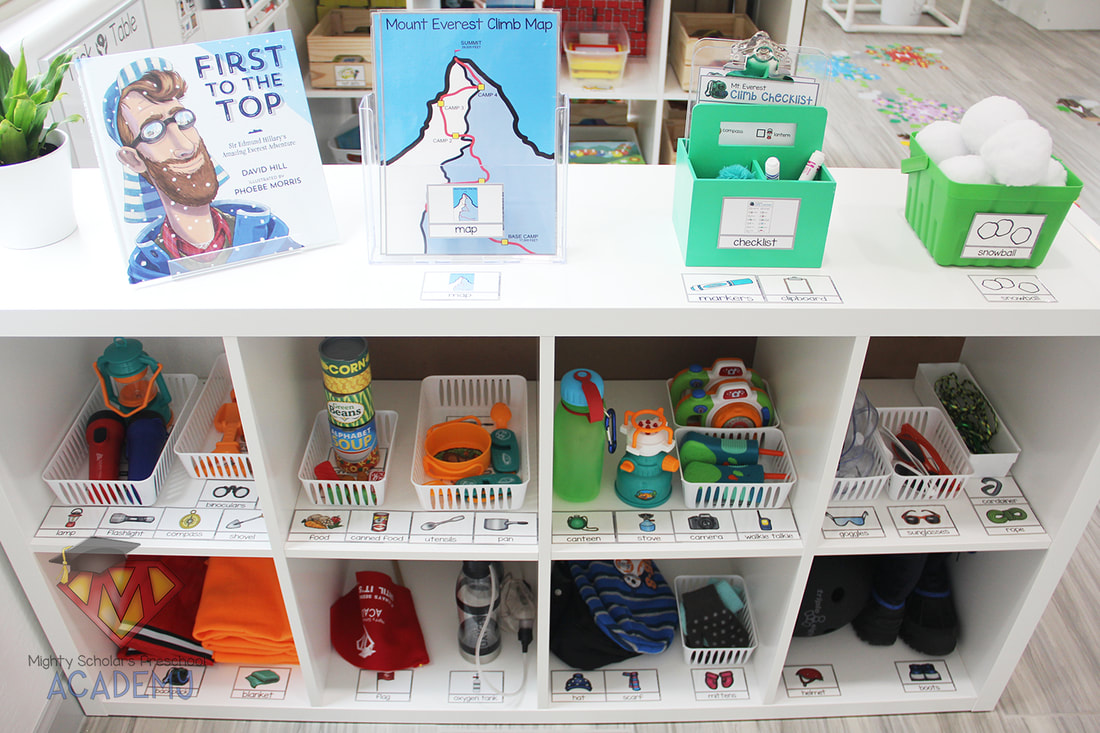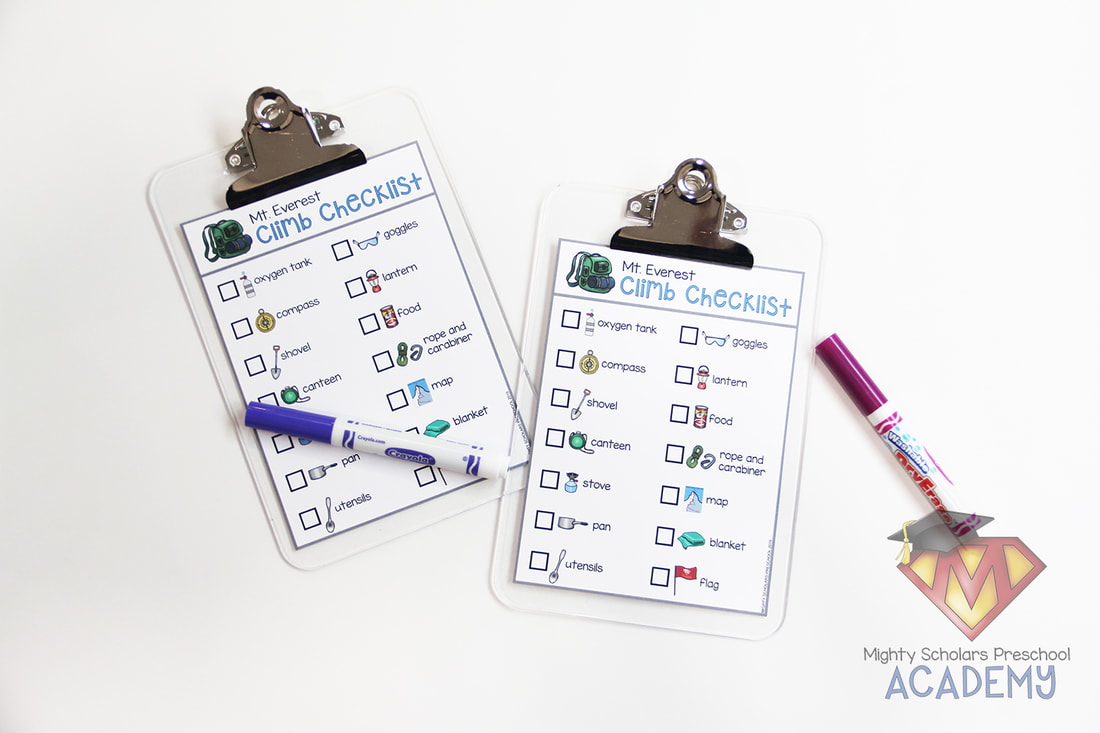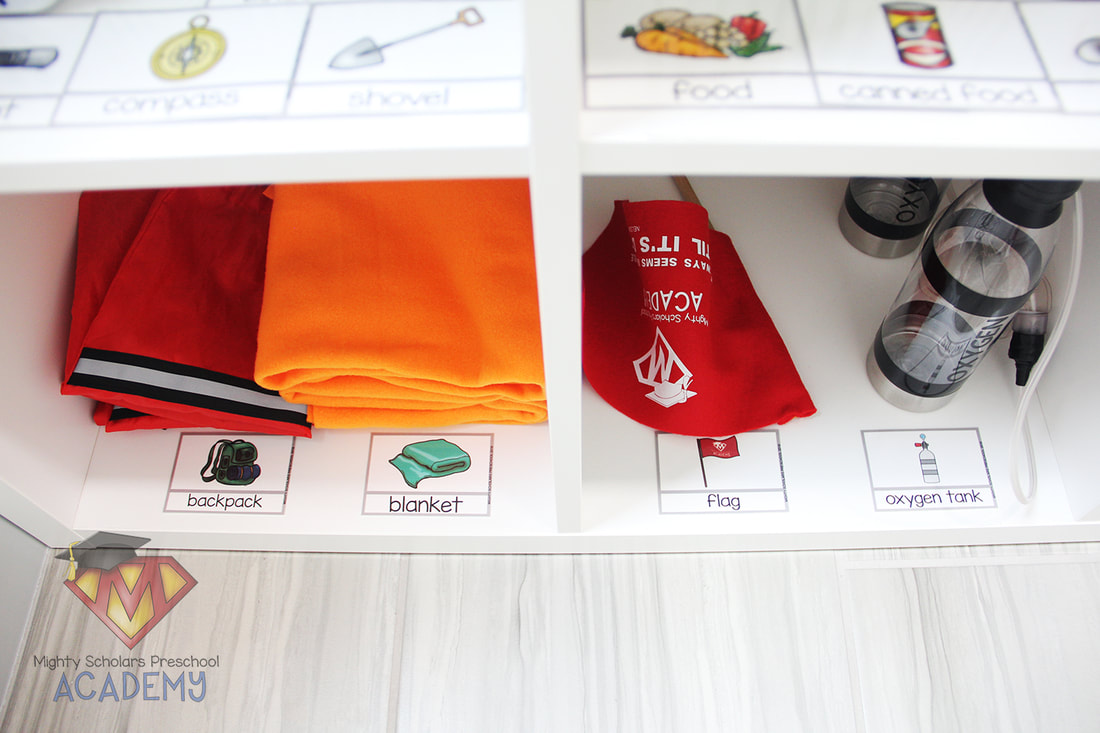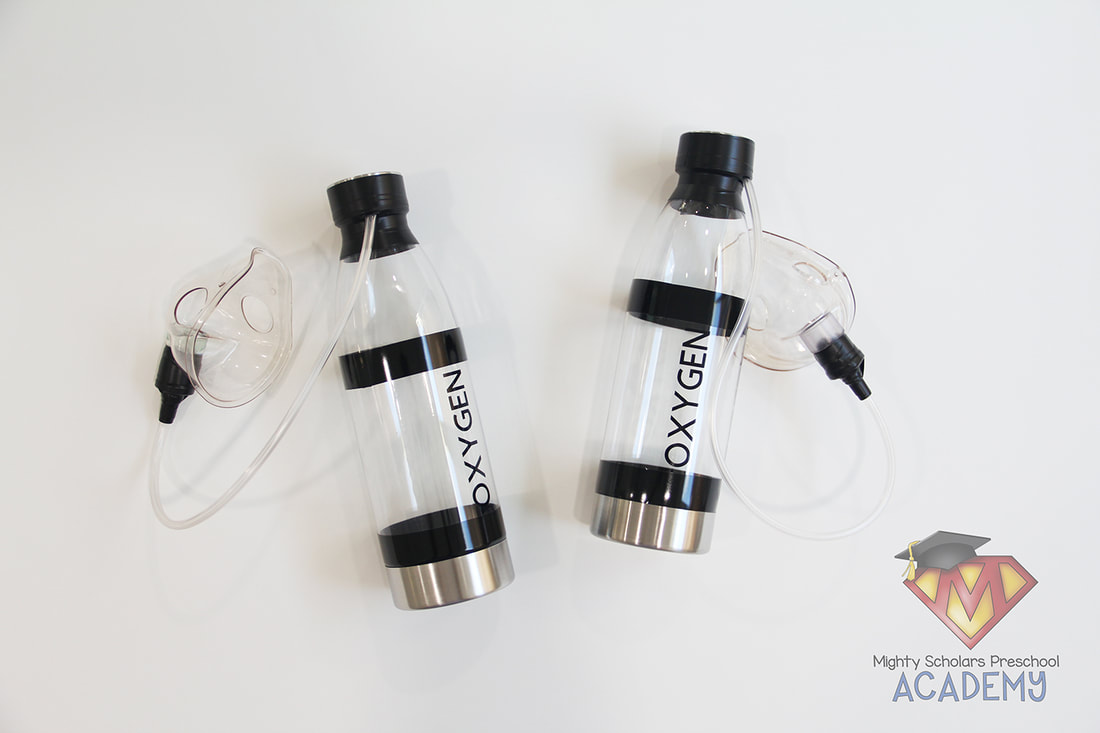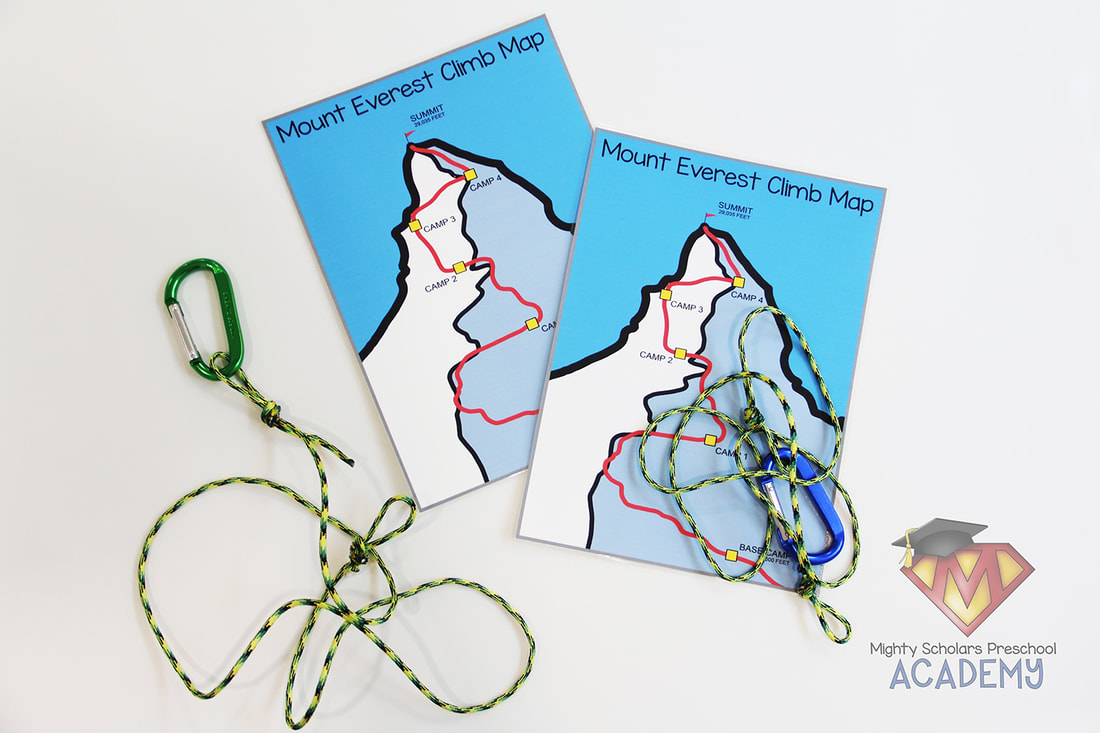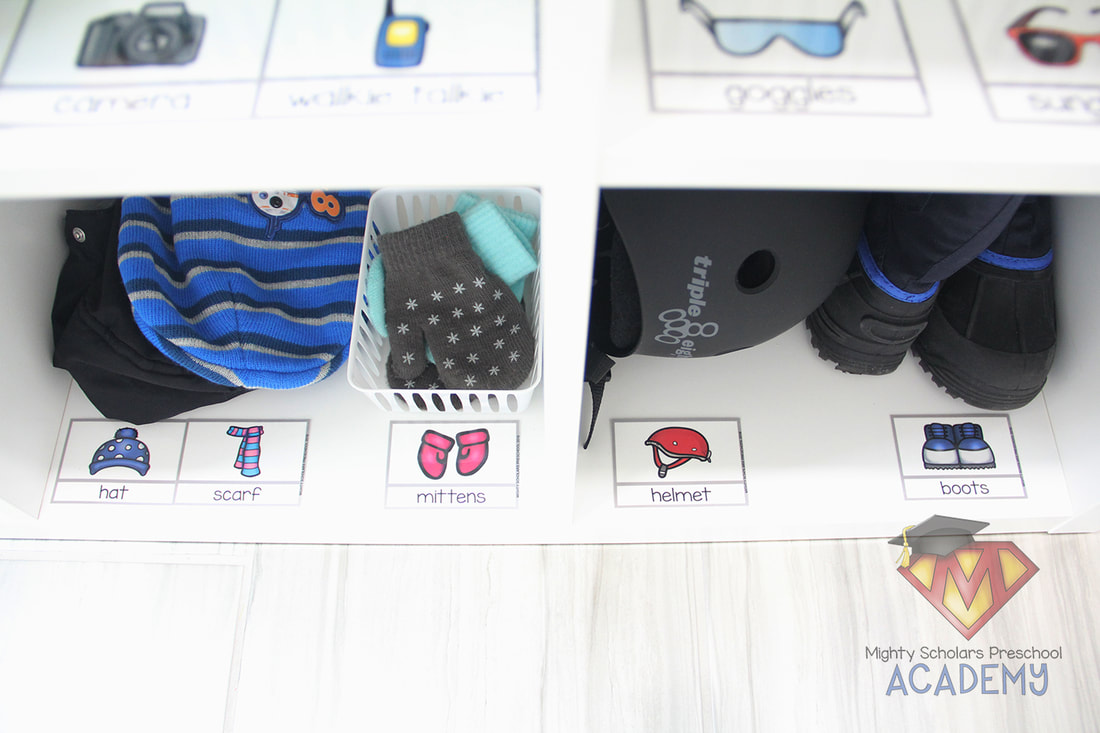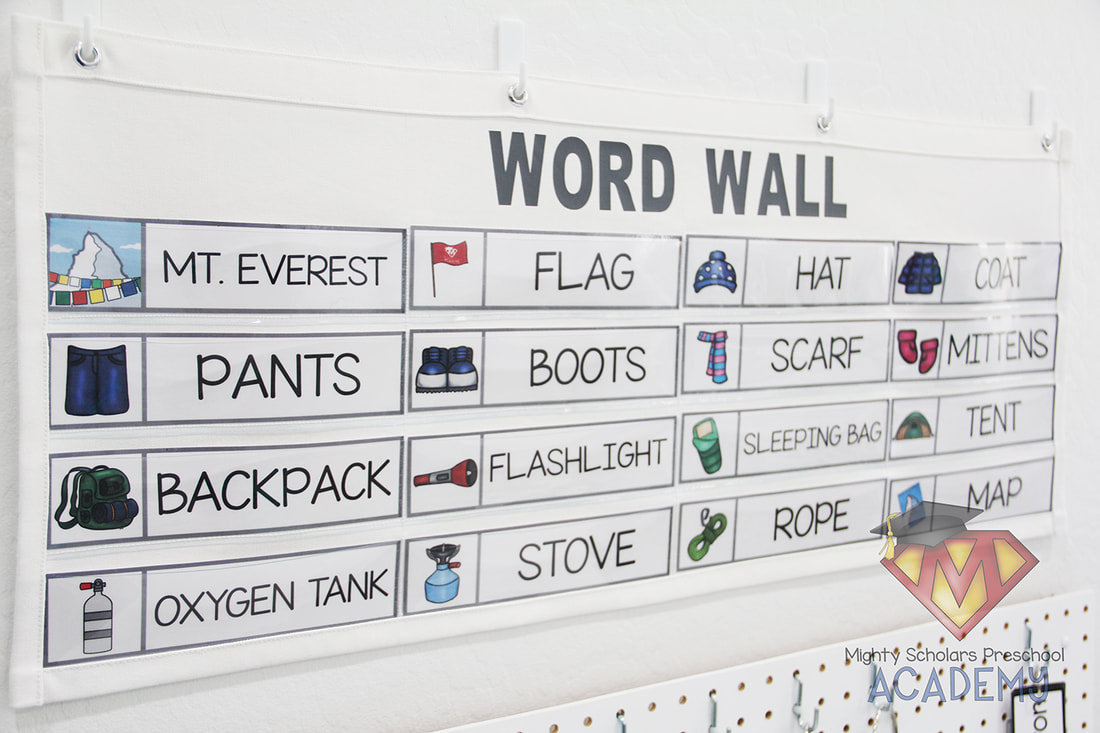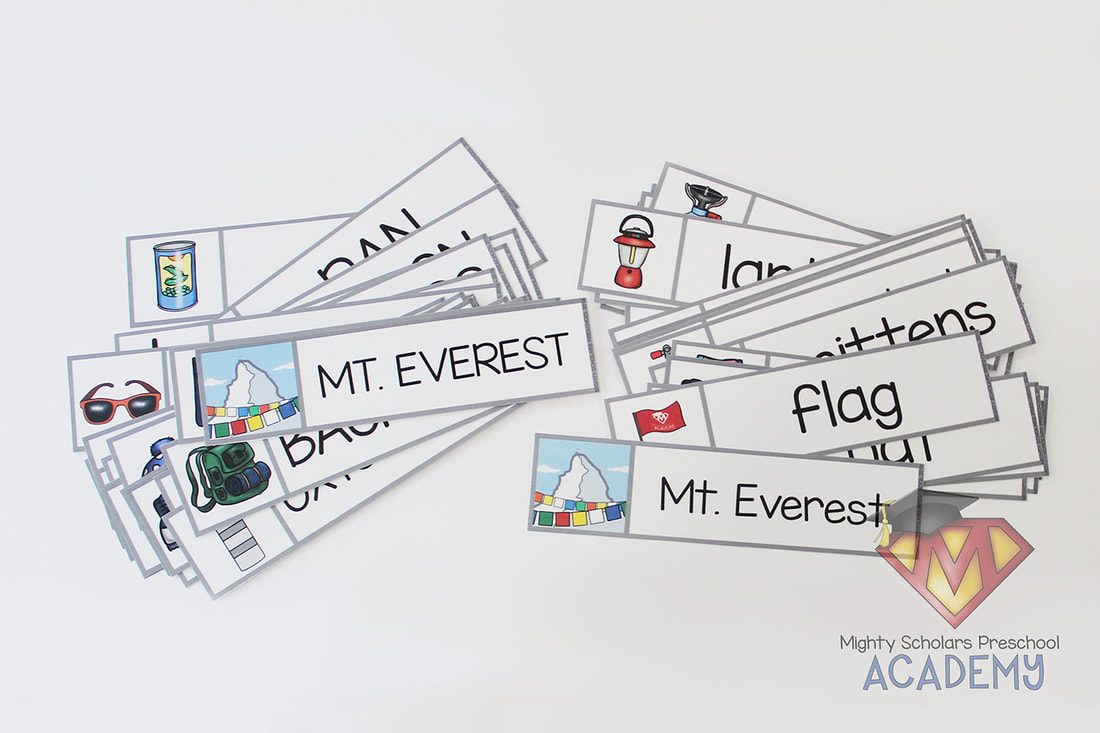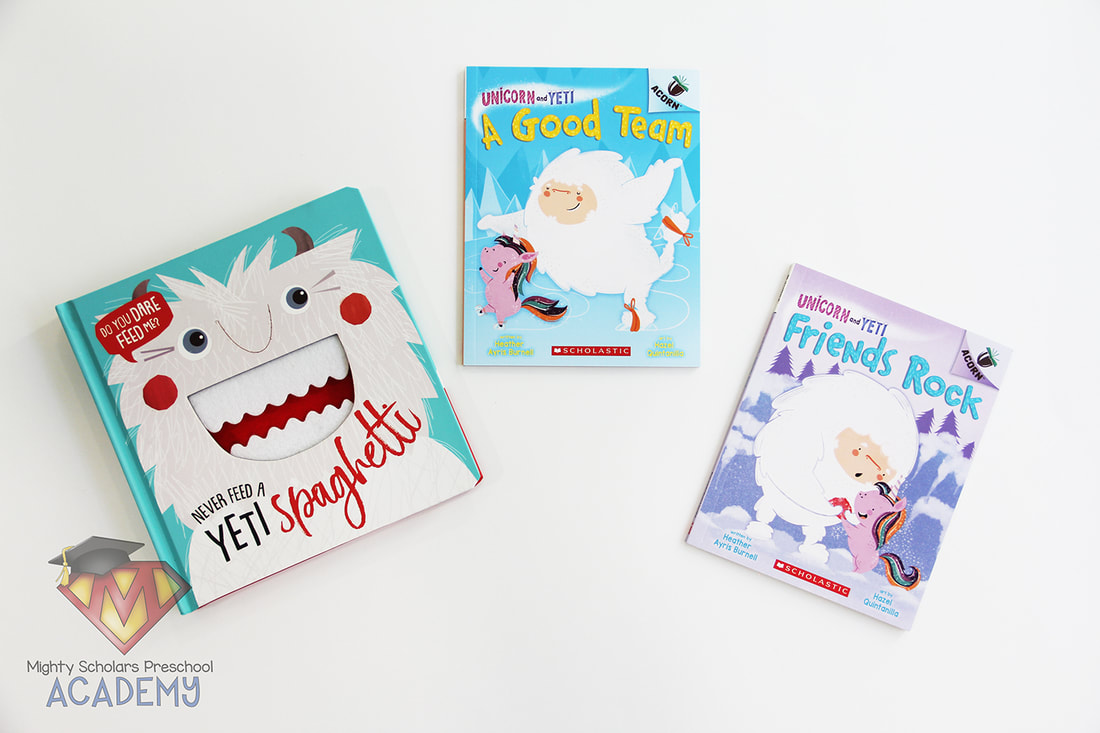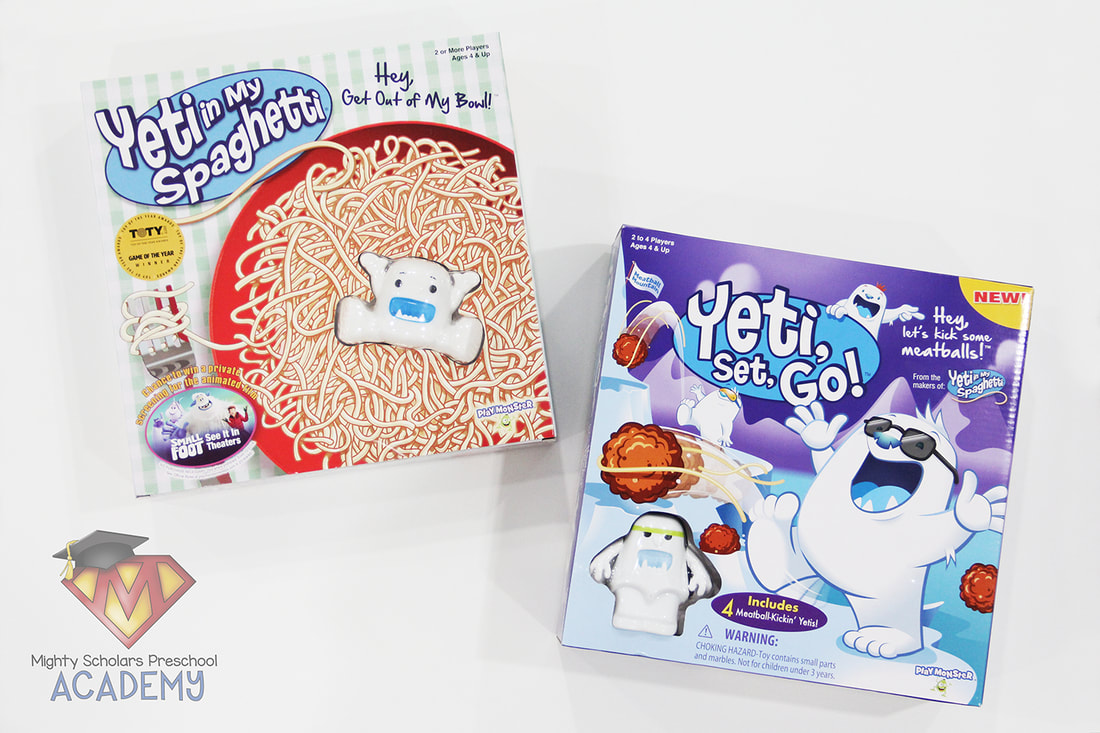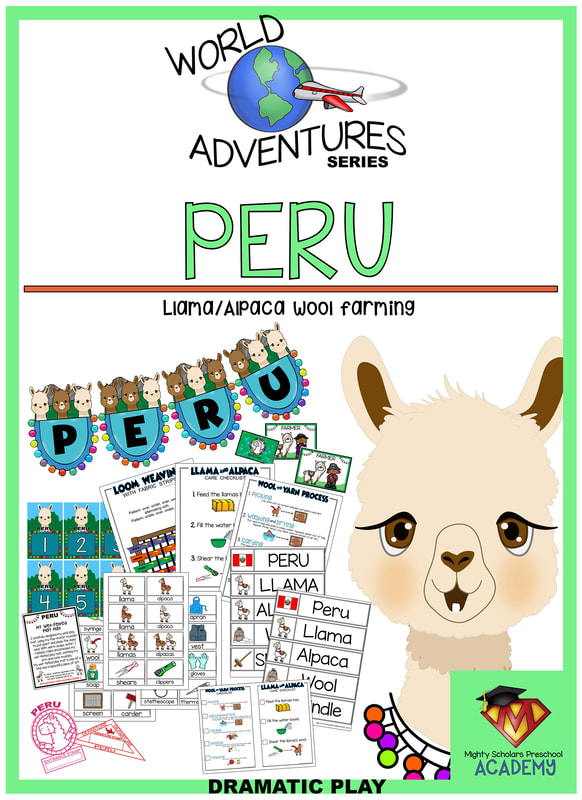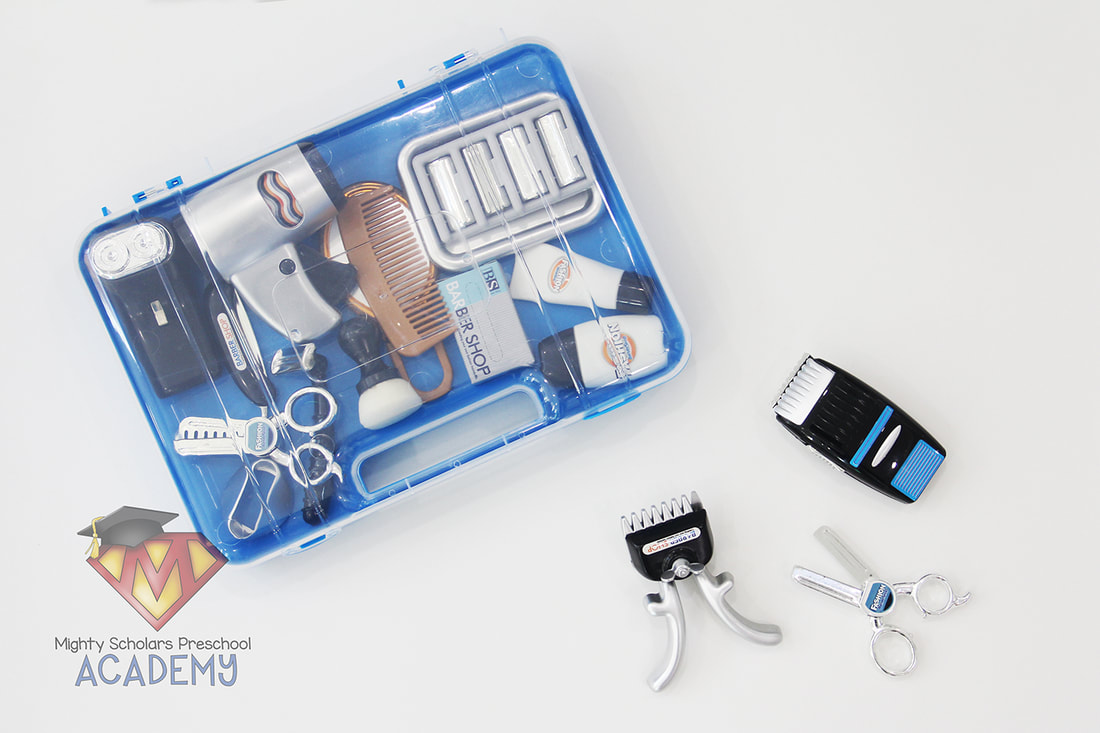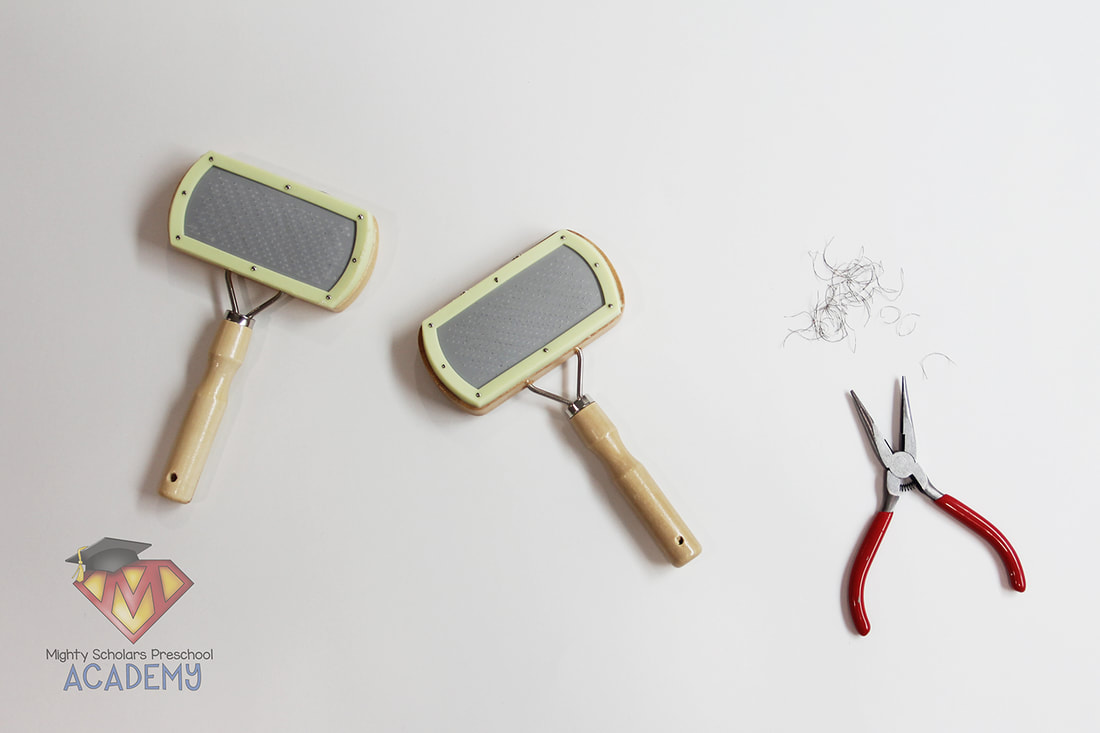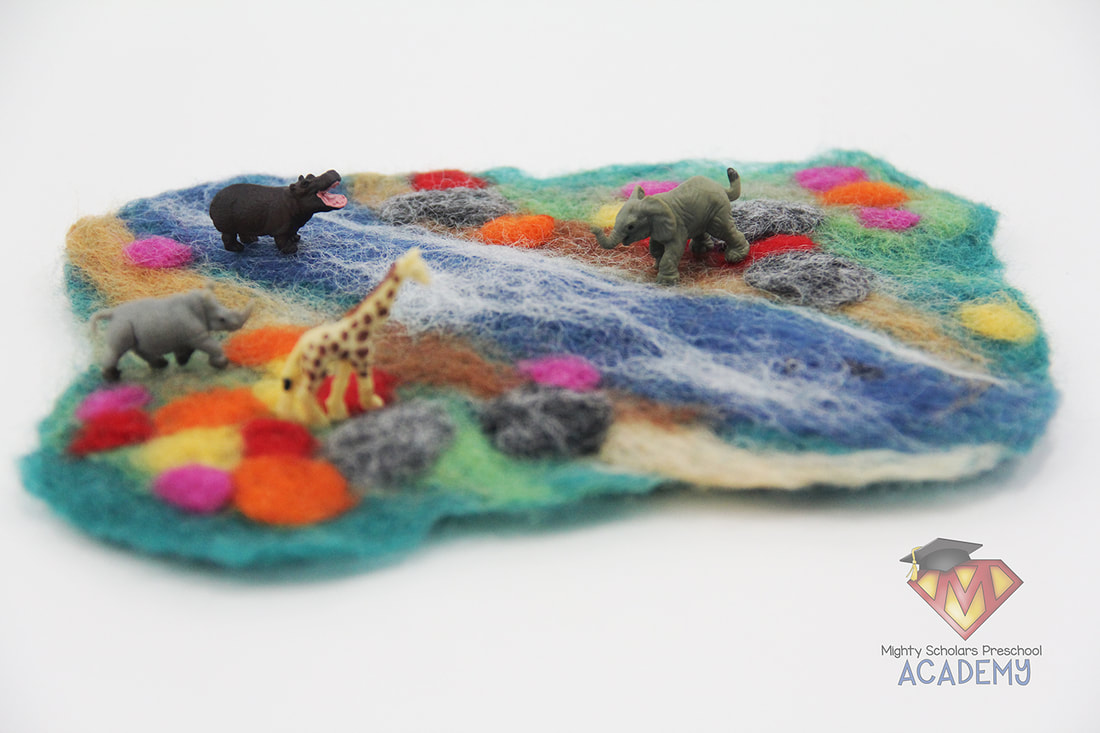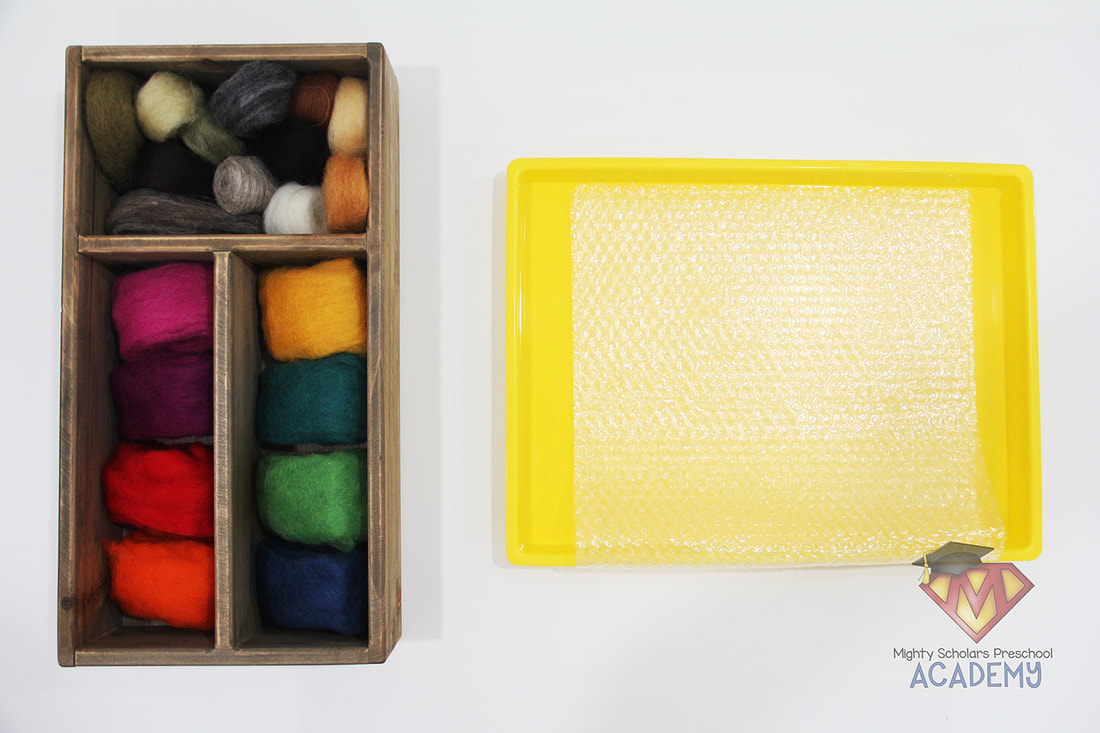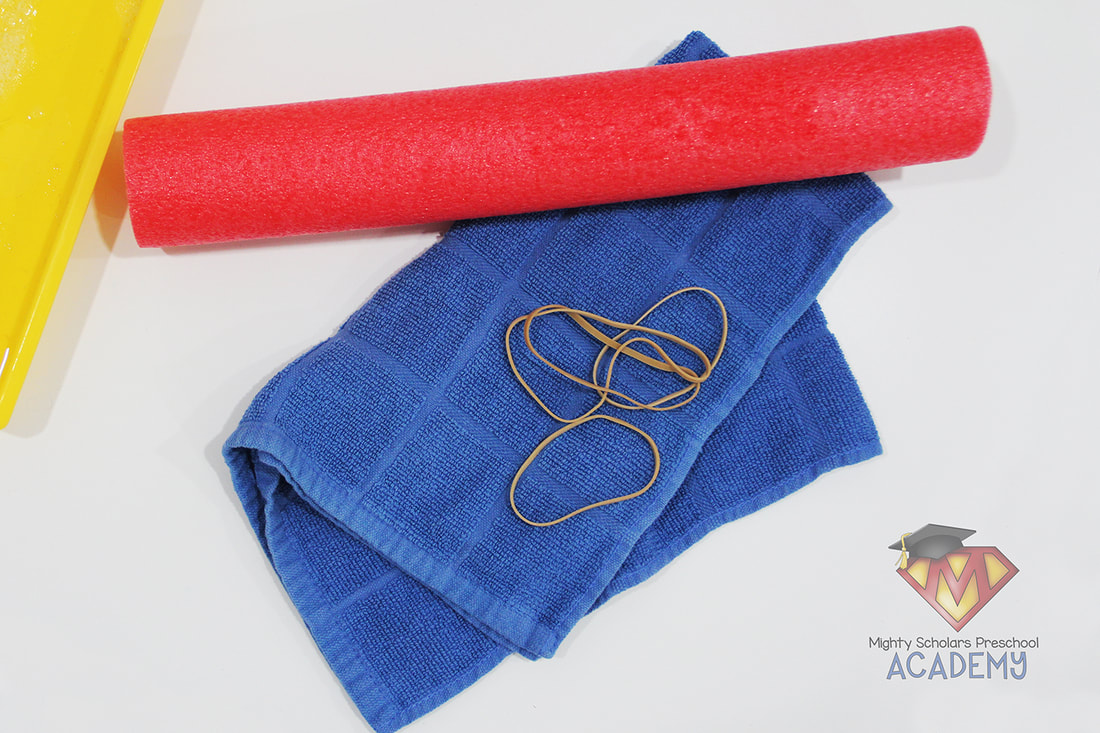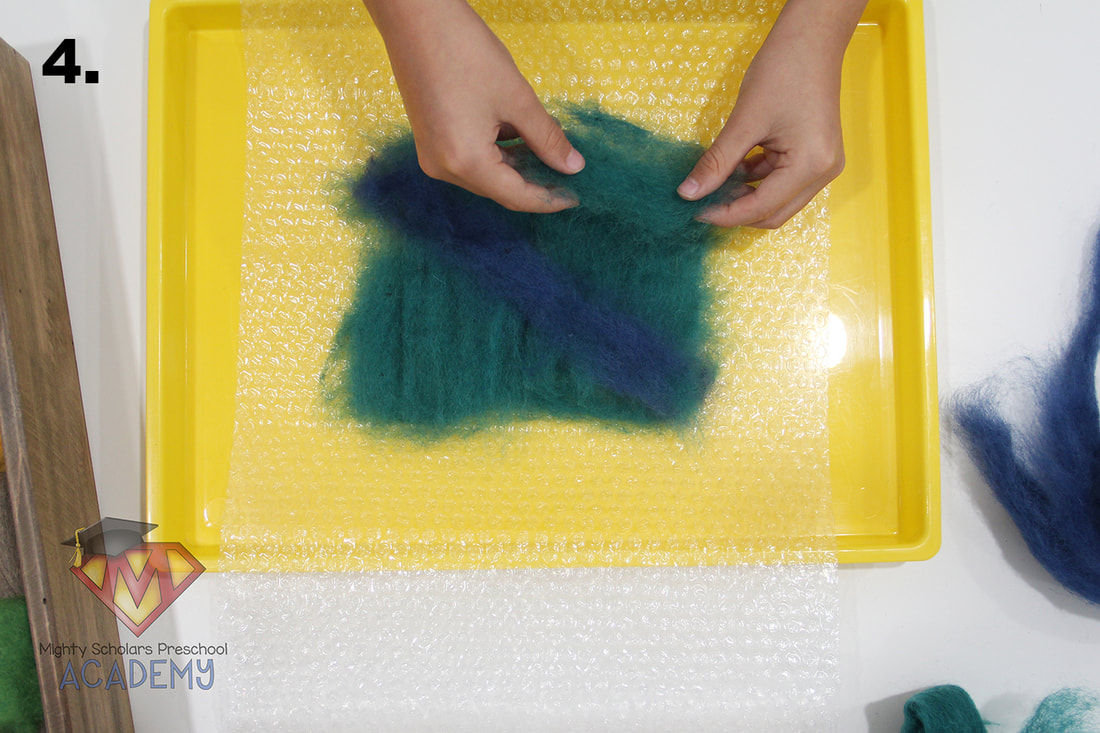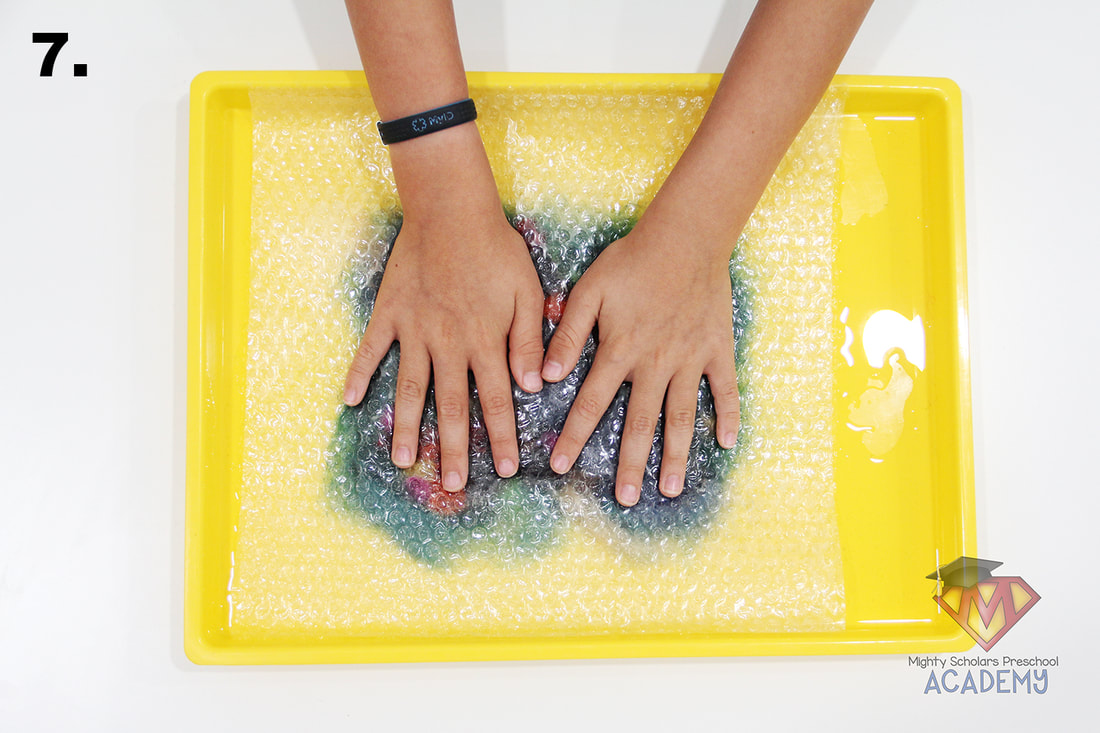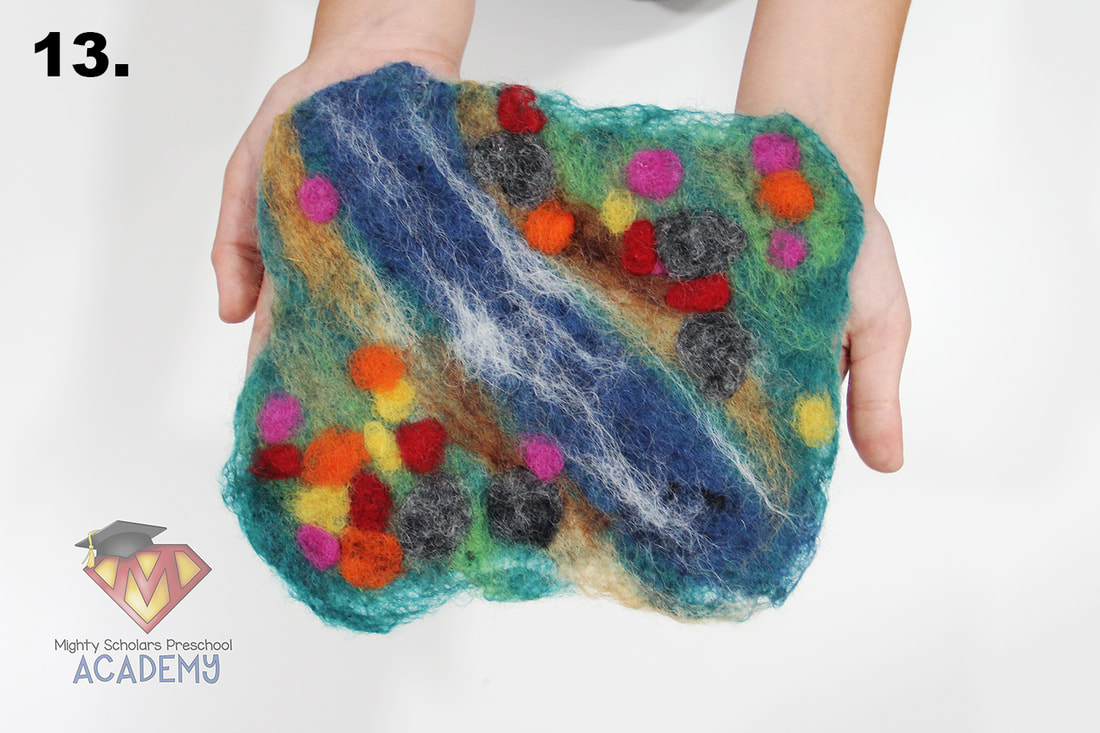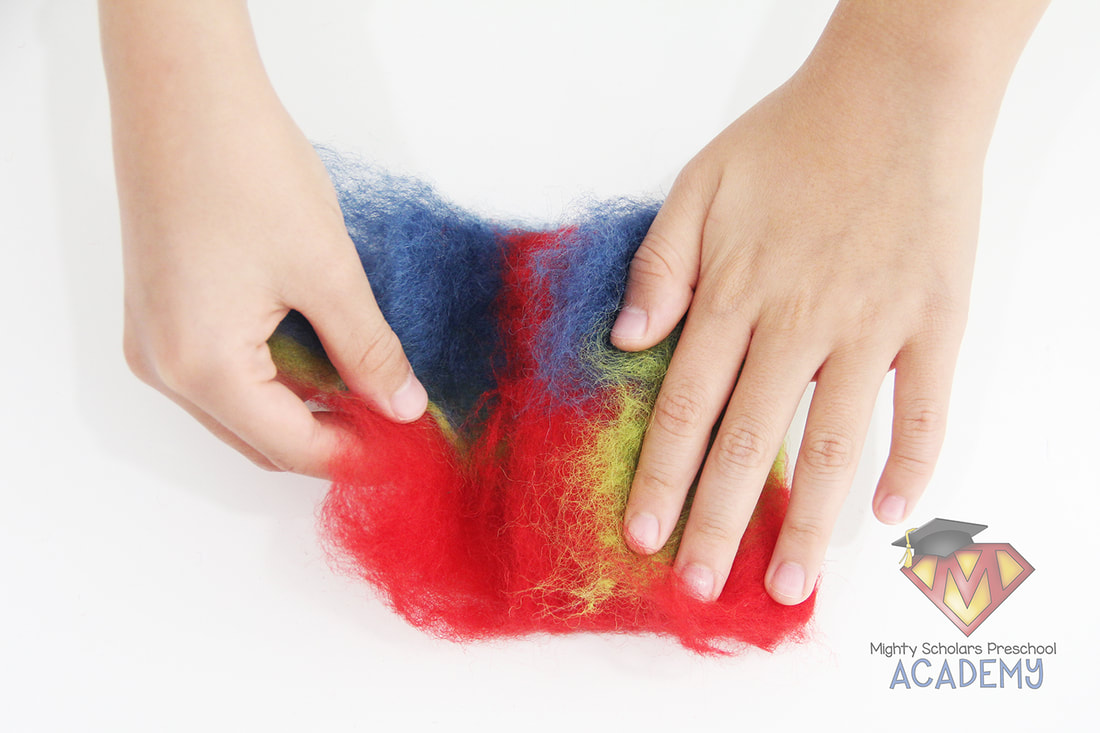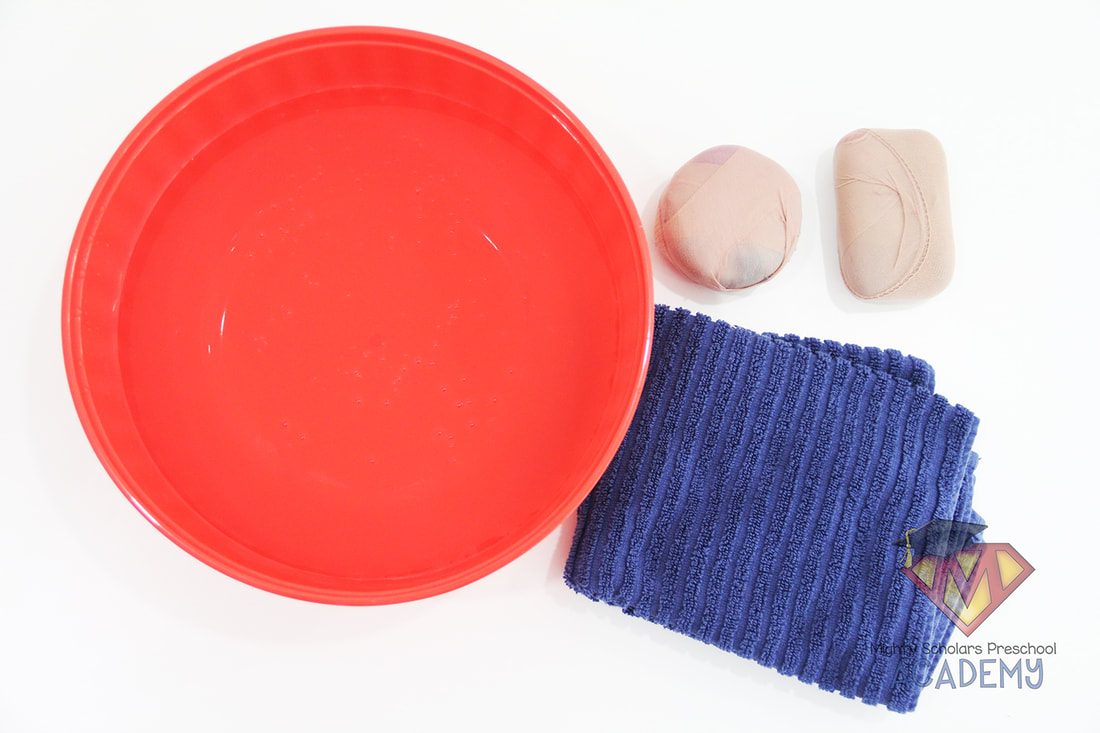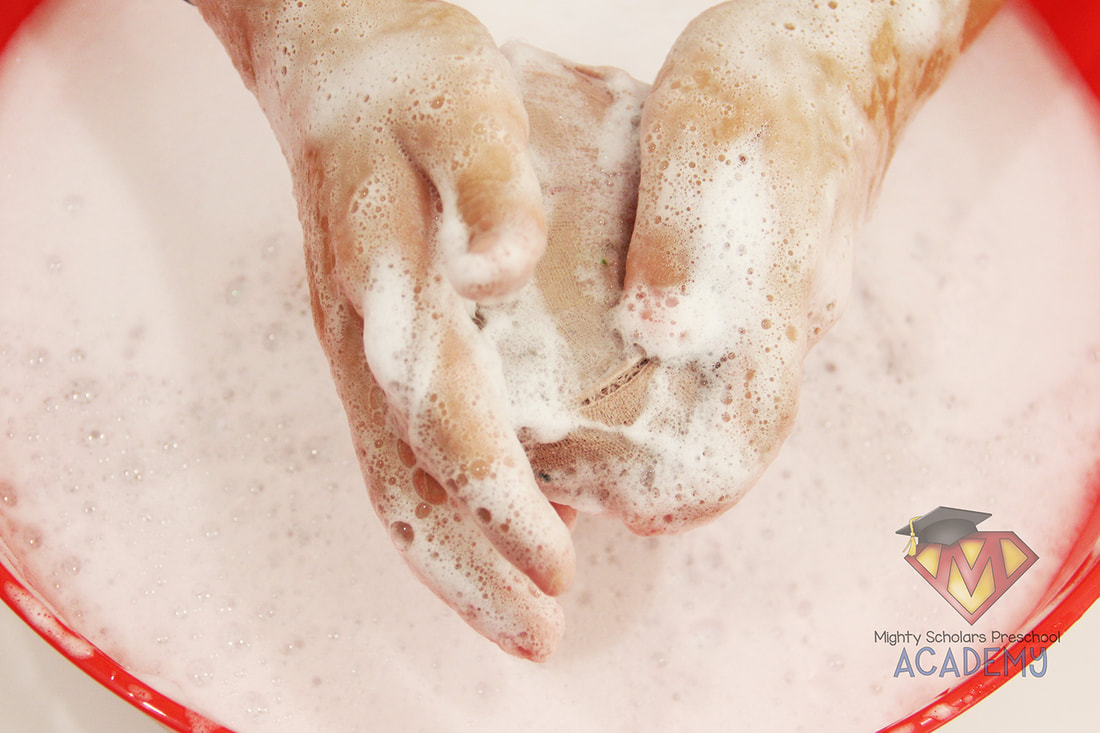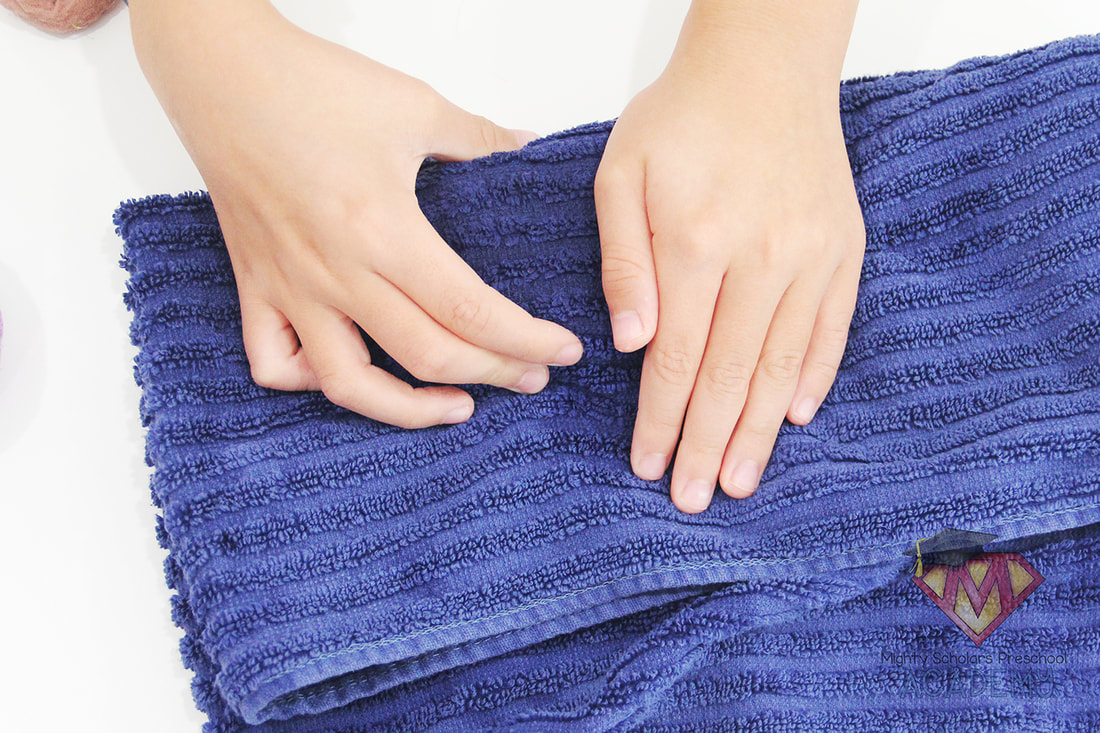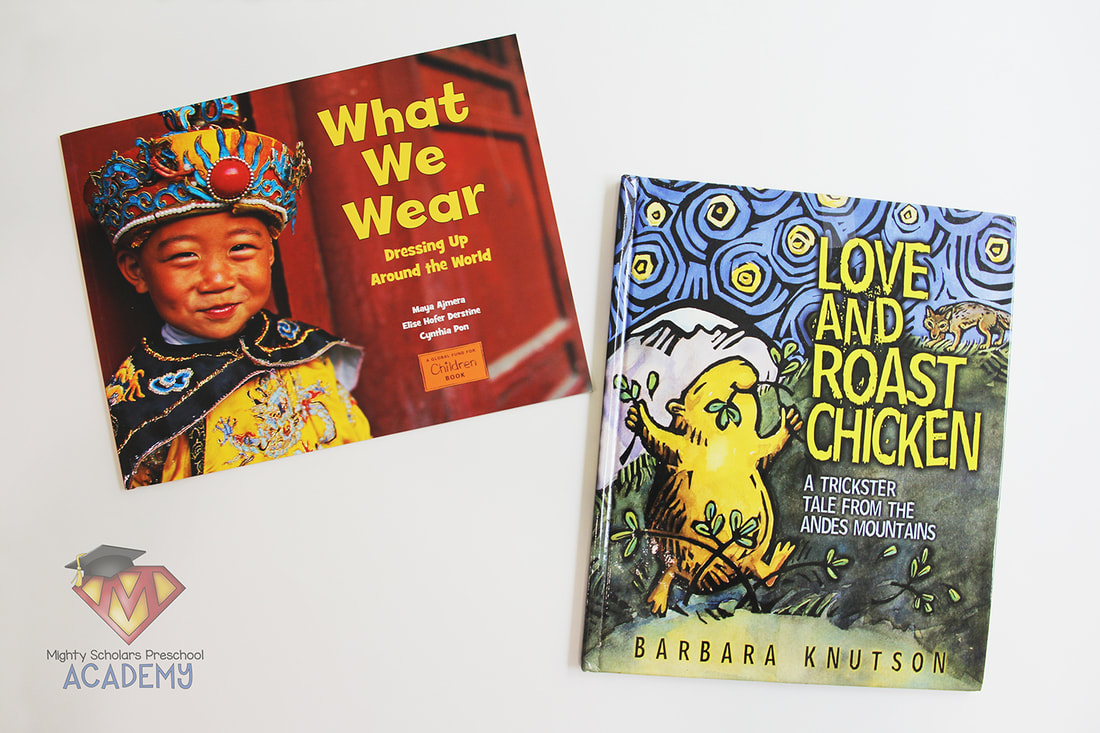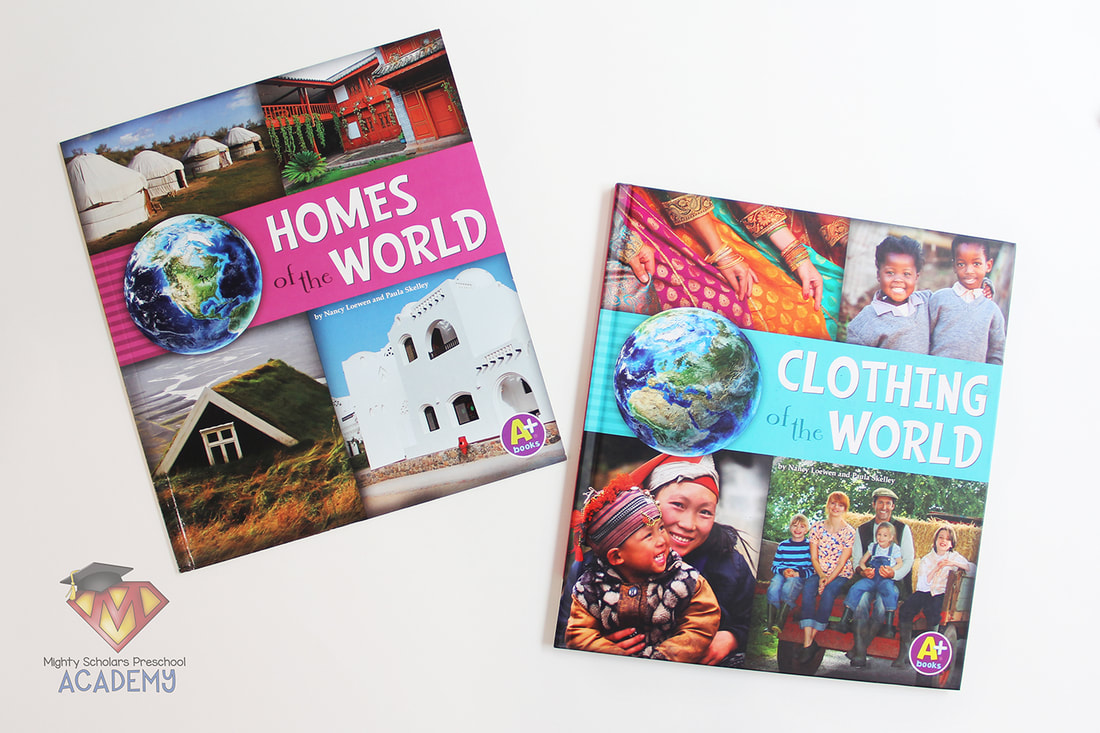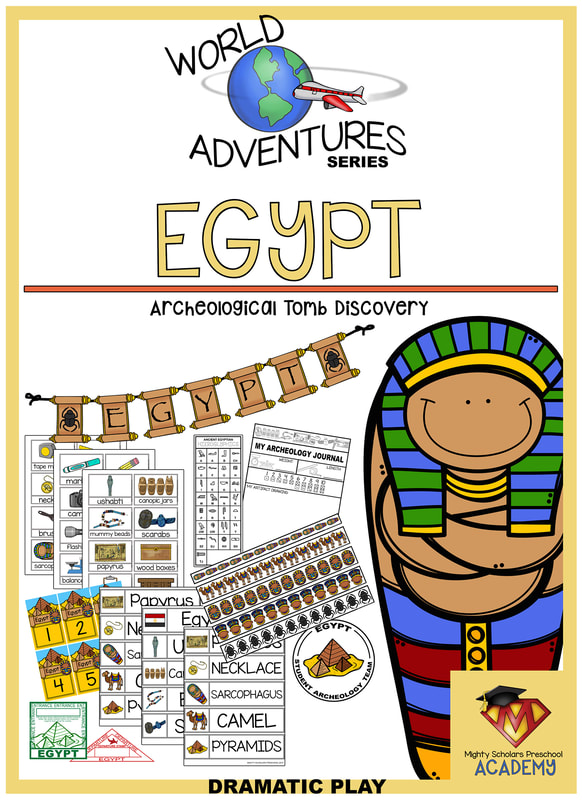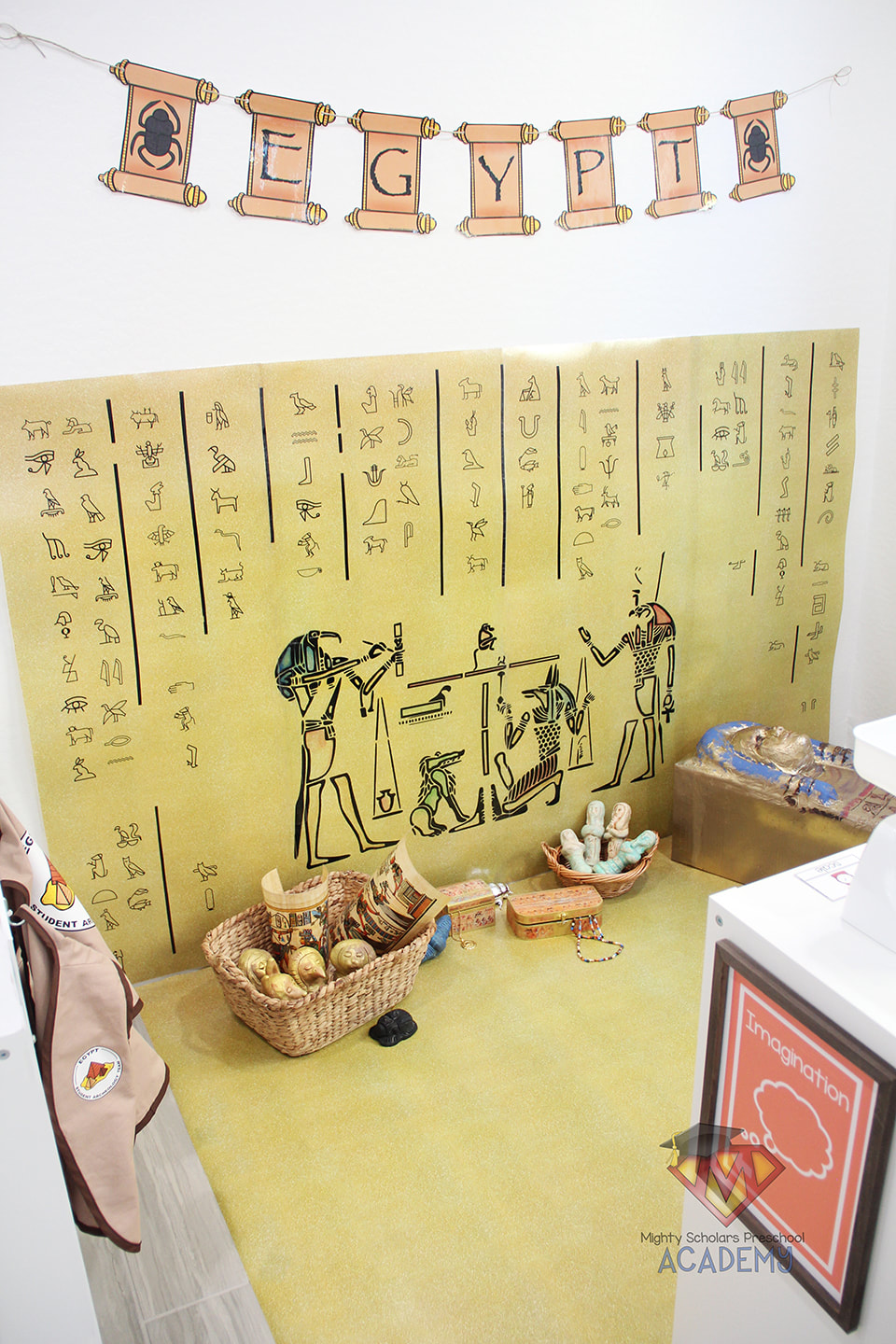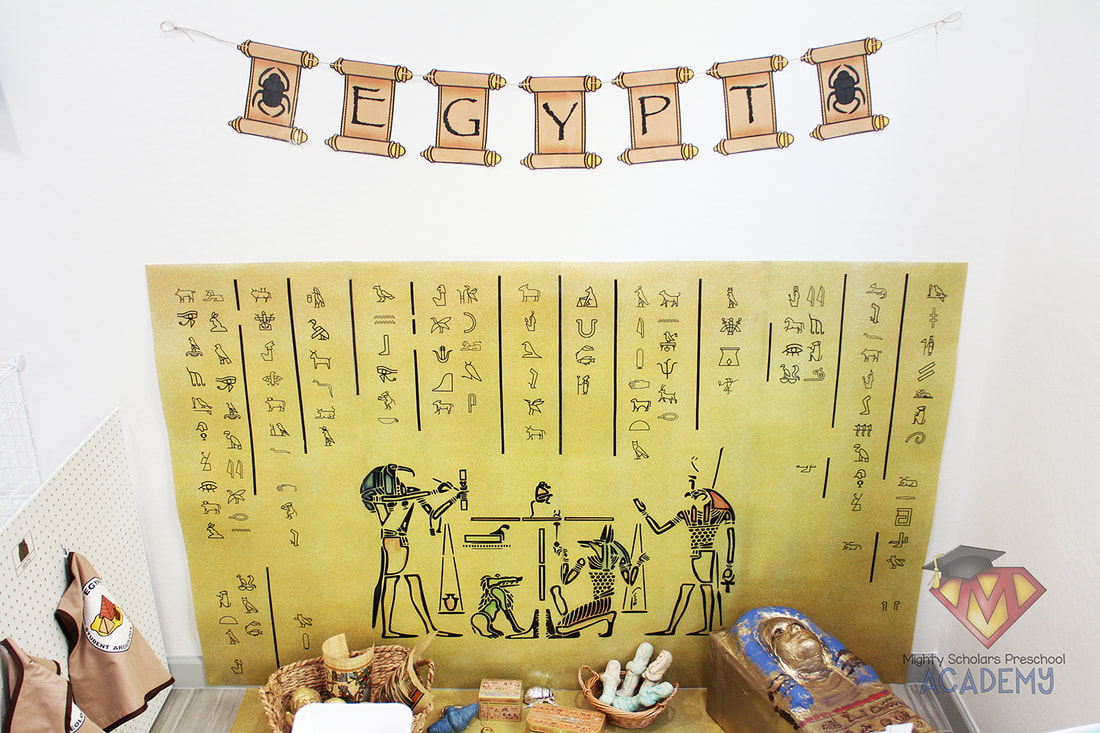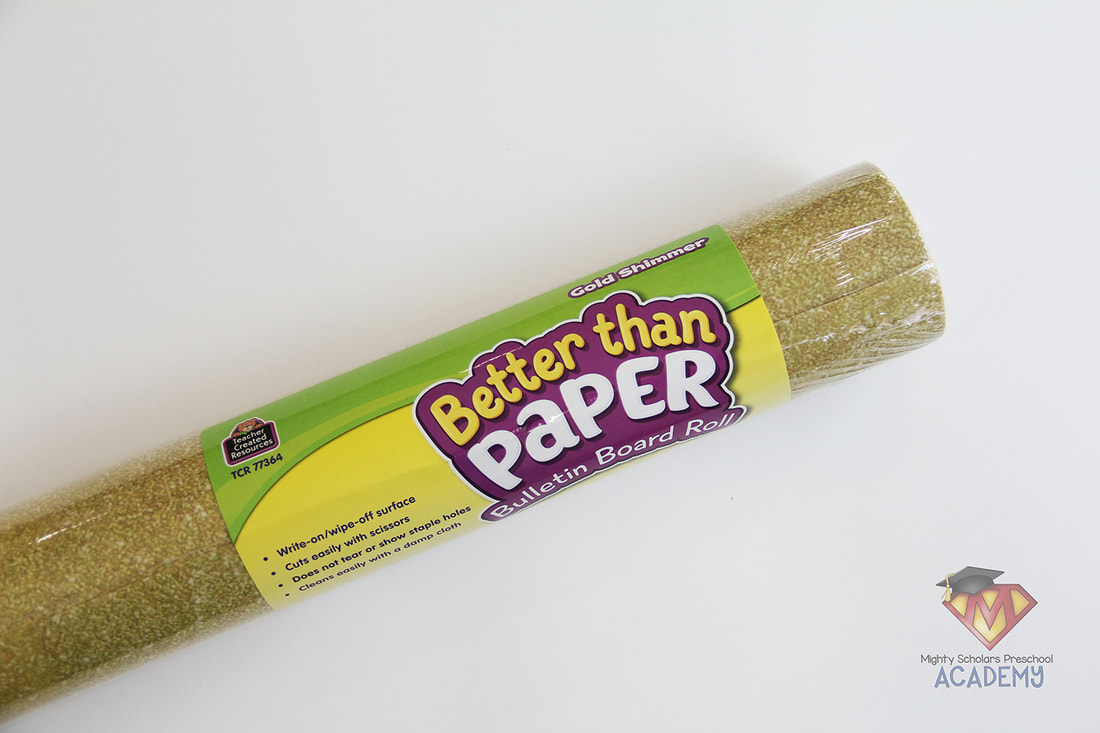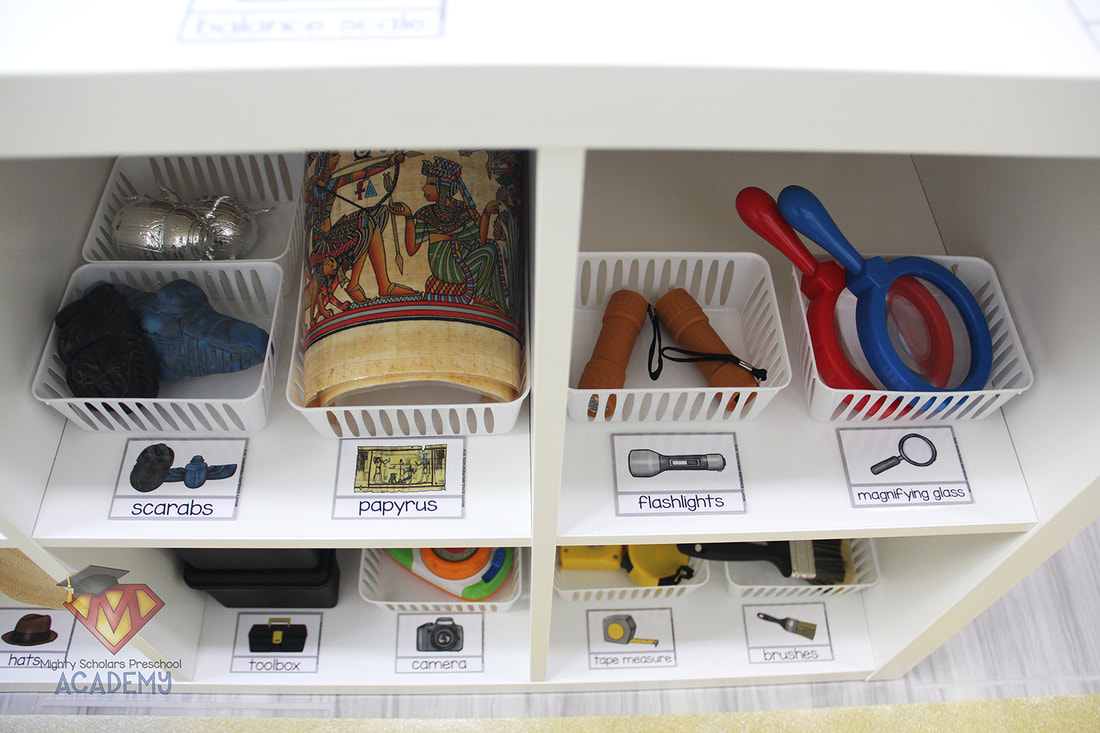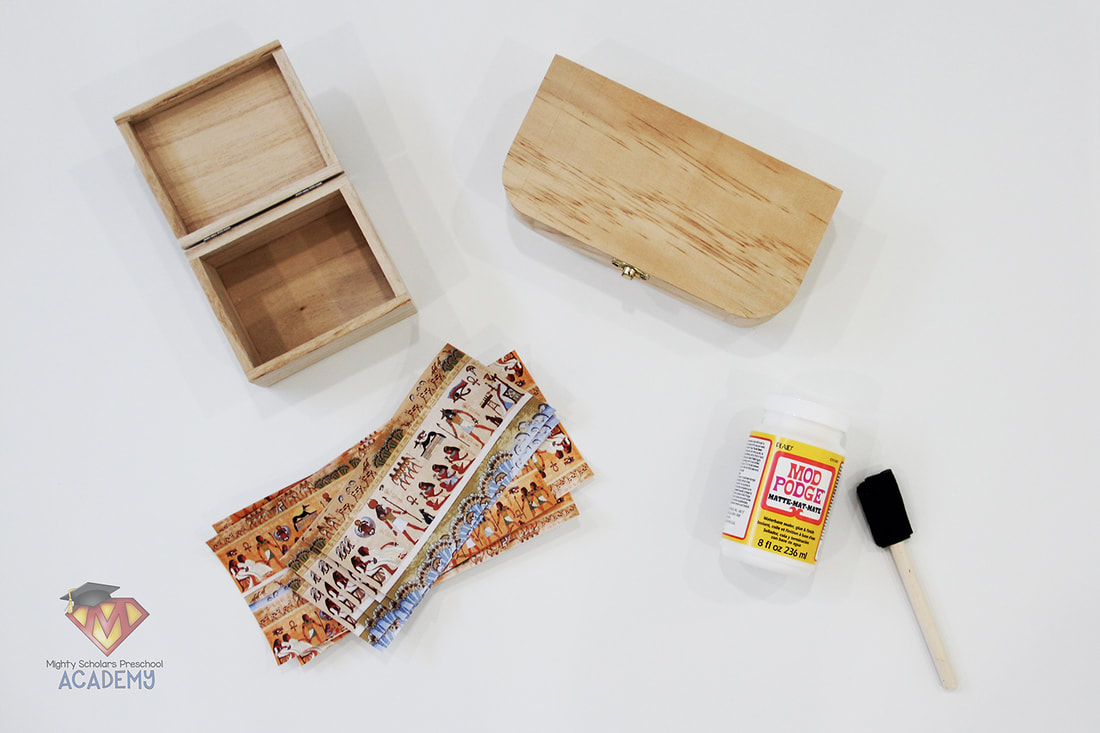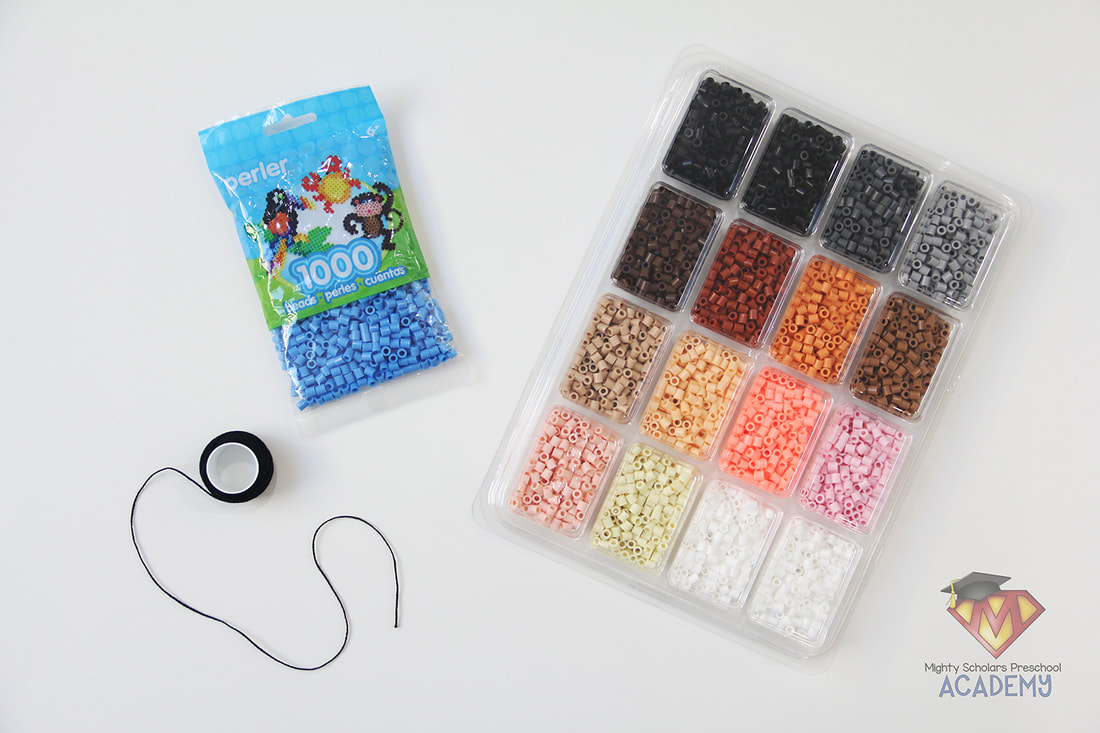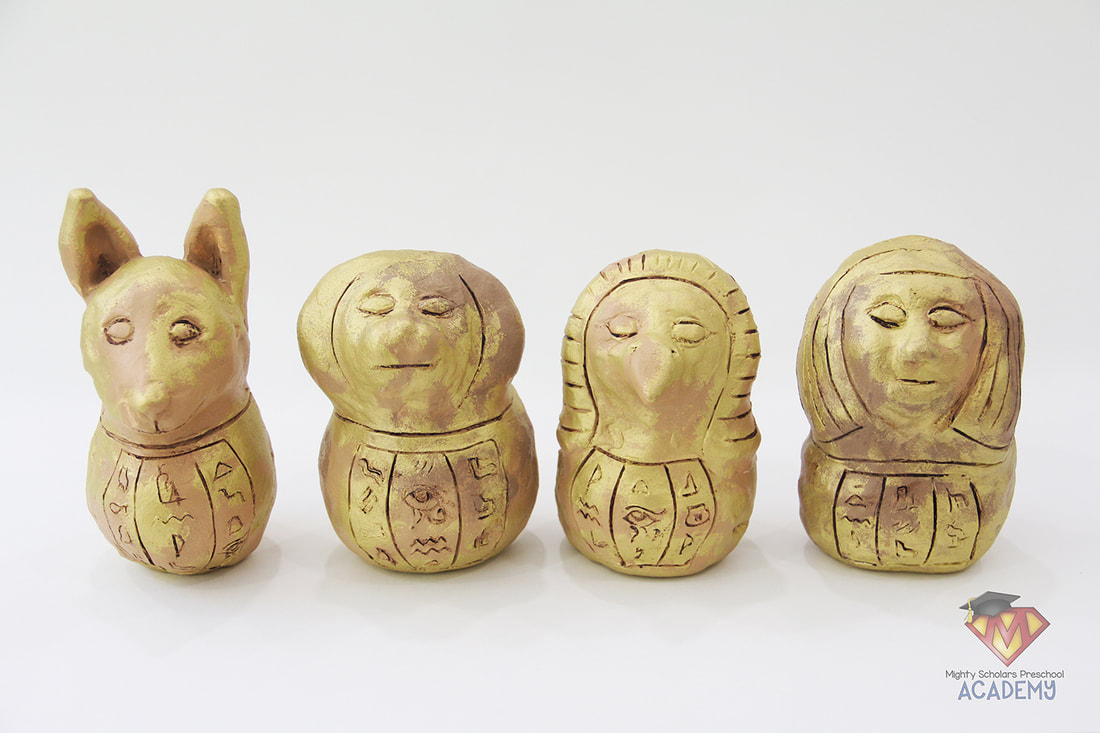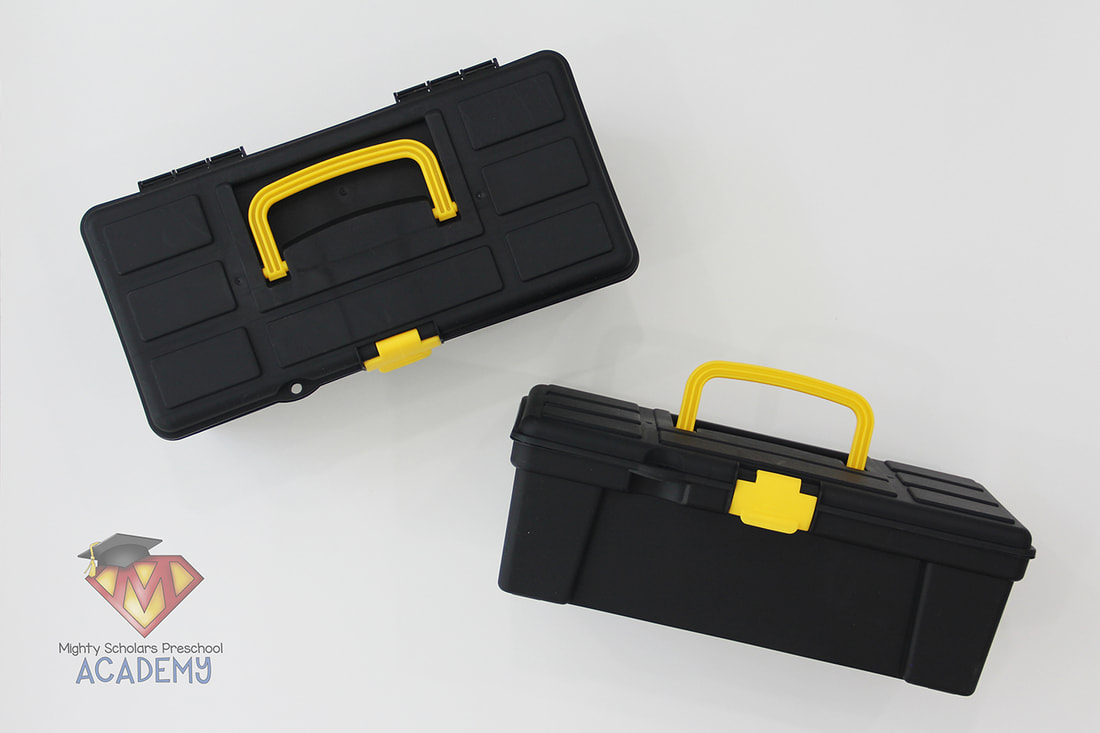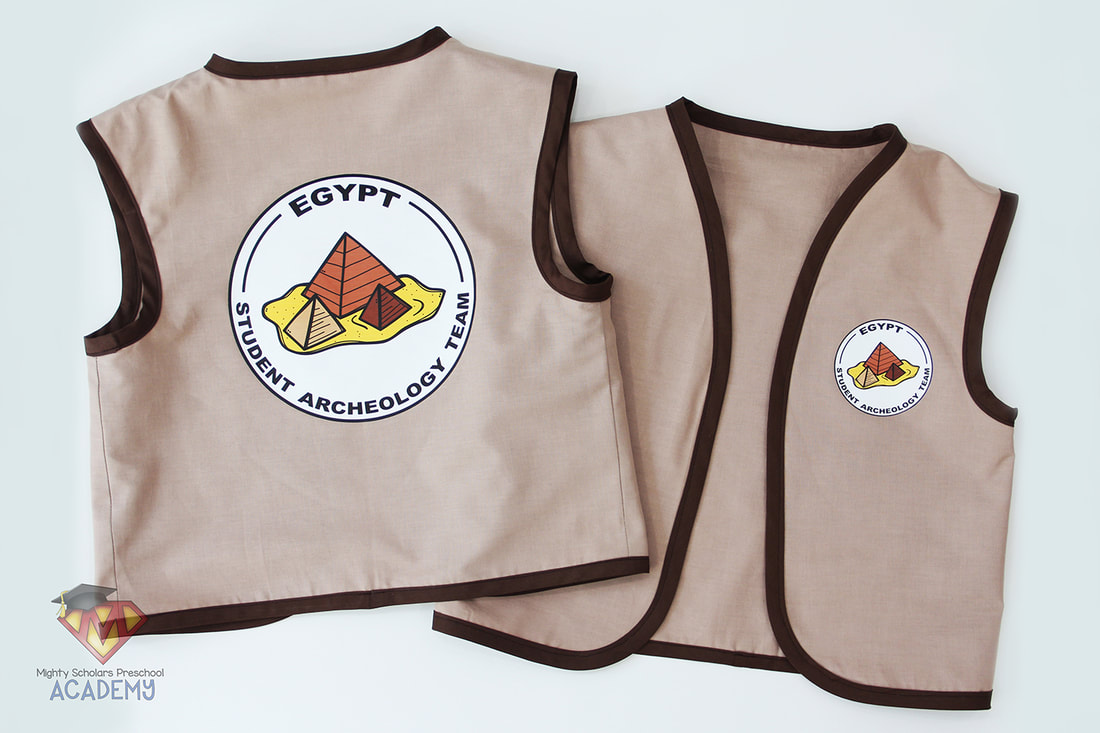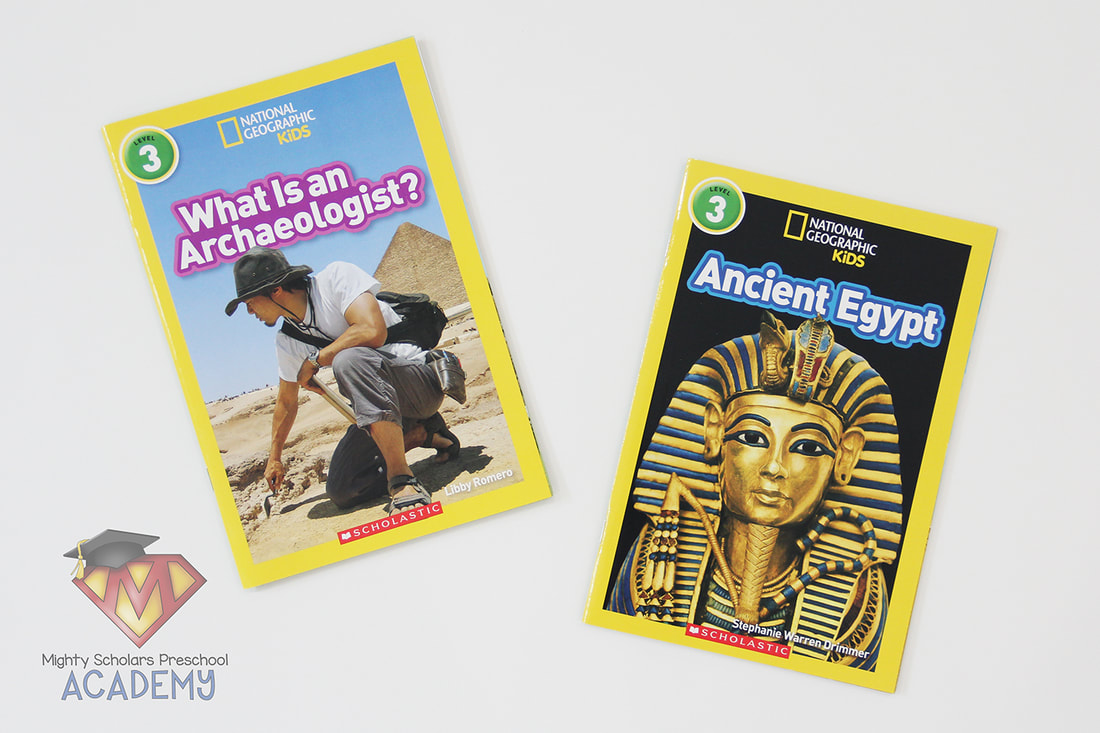|
Plants and the Role They Play in the Classroom
It's so important to have a living organism in the classroom for students to observe and participate in caring for. Caring for living organisms helps children build empathy. Bringing the outdoors inside also has incredible benefits. Some of those benefits can be: improvement of overall air quality (including removing toxins), greater awareness of nature, reduction of stress and fatigue, improved memory and concentration, better engagement with surrounding environments, generating increased positivity and reduction of sickness. Research has shown that students learn better when they are around nature (plants). Students (human beings in general) are drawn towards nature and the feeling it gives them. This feeling is called biophilia.
Plants in the Science Center
Plants can be a valuable part of the classroom science area, year round. We have several plants in our science center, including a glass bubble wall vase that allows a clear view of the entire plant from leaf to root. In addition to the wall glass vase, I applied a vinyl wall decal with the parts of a plant similar to the Golden Pothos, on the wall next to the vase as a visual reminder. Since the various Pothos are easy care house plants that can quickly root and live in water, they make for wonderful observation plants in our classroom. The link for the FREE PNG cut file and color JPG print file, is at the end of this post.
We talk about plants and plant care towards the beginning of the school year, in preparation for students to be given the opportunity to be carers of our classroom plants. We have a full unit on plants that we cover in the Spring. Giving one-on-one plant care instruction to each scholar gives a wonderful introduction to our memorable Spring unit lessons on parts of a plant and basic plant needs that the carers supplied for our classroom plants throughout the year.
Student Care of Classroom Plants
Our older scholars have the opportunity to care for our classroom plants during the length of our school year. Caring for plants can assist in connecting to the environment, learning environmental awareness and the needs of plants to help them not just survive, but to thrive. Students learn the value of other living beings and an awareness of how incredibly important nature is–building empathy. Caring for plants and animals in the classroom helps children understand that everything has needs and not all needs are the same. Having various types of plants in the classroom helps show the varied needs from plant to plant. As we give children the opportunity to be helpers in the classroom and as their empathy grows, we help to build their confidence.
Each scholar receives an individual lesson modeling proper care for the plants in our classroom–during their turn in rotation. The responsibility of plant carer is assigned and rotated from student to student as needed for our plants. The classroom plant carer has certain tools in their carer basket: Montessori independence apron, small Montessori lamb's wool leaf duster, small bowl and child friendly scissors to clip and collect expired leaves, small 8oz. misting spray bottle, small hand towel to wipe up any messes and a mini stainless steel watering can that holds just the right amount of water for the plant in care. The small squeeze action spray bottle is much easier for small hands to use, rather than a finger pump spray bottle, and provides excellent hand strengthening. Once they have been instructed and the plant care has been modeled, they take great pride in their meaningful responsibility for the delicate care of our classroom plants. The carer basket is placed out of students reach when not in use. The basket is brought out and a plant is taken to a table when it's time for a student to care for it. Care of plants is always supervised, with limited to no interference.
Cautions and Tips
Many classrooms have low light conditions. There are several plants that can thrive in a low to medium light environment. Some popular low to medium light, easy care plants are: pothos, snake plant, philodendron, spider plant and the peace lily. Take care in choosing plants for your classroom and where they'll be placed. Some plants are toxic or can cause adverse skin reactions.
Overwatering is the number one cause for plant root rot, stem rot, yellowing of leaves and leaf drop. It's best practice to allow the soil to dry completely between waterings. Keeping the soil too wet can also invite pests such as fungus gnats. Teaching scholars the correct way to check soil, to see if the plant needs watering, can also be a valuable part of their care routine. I teach my scholars to check soil by carefully pushing their index finger into the soil, up to the second knuckle. If the soil is completely dry to that depth, the plant needs watering. Each plant will have its own needs. Making a list of average watering schedules for each plant, or marking the pots with a color to help keep track of how often to water, can help alleviate some of the headaches with the different needs. A checklist can also be kept to help keep track of each plant and when it has been cared for. Older students can learn to mark the checklist and help with making sure plants are checked on a regular basis for needs. As an alternative to a paper list, I recommend the 'Planta' app. After listing each type of plant and its basic information, the app will remind you to check for watering and to fertilize, depending on the particular plant need. I've found this app to be extremely handy since our classroom has more than a dozen plants with varying needs and watering schedules.
Click the image below to be taken to the FREE PNG cut file and color JPG print file:
Please note, as a participant in the Amazon Services LLC Associates Program, I may earn a small commission on qualified recommended links.
The Amazon Services LLC Assocites Program is an affiliate advertising program designed to provide a means for sites to earn advertising fees by advertising and linking to Amazon.com
My Amazon Picks for plants in the classroom are:
As the holidays begin and Fall arrives, my classroom begins buzzing with excitement over all of the holiday activities. One of our Fall favorites has been the dramatic play pumpkin carving. Along with several other Fall and Halloween props, pretend pumpkin carving is one that every scholar takes special interest in each year. Supplies Over the years, the craft pumpkins have been made of stronger, longer lasting materials. The current pumpkins in our activity have lasted over two years, despite taking a bit of a beating for three weeks out of each school year. The initial investment is worth the cost, as long as you can get them on a reasonable sale or even seasonal clearance. It's imperative to purchase and use tea lights with a child-safe battery compartment. The tea lights we use have the battery compartment screwed shut with a micro screw. Materials for the pretend pumpkin carving include:
Present Once you have carved the pumpkins, fill each with enough yarn strings and sprinkled in dried pumpkin seeds to give the feel of real pumpkin carving. I set out a big black cauldron as the collection bowl for the pumpkin innards. When my scholars have completed their imaginary play, they scoop a good portion of the innards back into the pumpkins for the next peers to use. It's so simple, yet so much fun for little scholars to use their incredible imaginations with. Each school year, we spend time learning and practicing the skill of weaving to help aid in:
Sensory Play Weaving is usually taught as a skill in ECE and primary education. However, weaving can move beyond a skillset. It can become more of an in-depth sensory experience for the tactile and visual senses. If a bit more preparation is made, weaving can also involve the auditory and even the olfactory senses. Weaving materials, such as crinkle fabric and ribbon or ropes with small jingle bells, can make sounds that add to the sensory experience. Cotton soft tubing or fabrics can have scents added to also go along with a theme. Beyond Ribbons Typically, ribbons are the go-to weaving material. However, I encourage you to move beyond ribbons and get creative with materials, looking for various thicknesses, textures, colors and movement. Some of the materials rotated at our weaving wall include:
Looms of Various Sizes and Materials Looms can be any size and made from various materials: strings, sticks, cardboard, popsicle sticks, plastic pipe or even metal. Dollar store dish racks or cookie racks are also a sturdy alternative. I also use looms as sensory experiences in our sensory bins and dramatic play themes. Once a year my scholars weave paper placemats, using a paper "loom" and paper strips. No matter the type of loom offered, the developmental benefits of weaving are incredible when its provided as a more in-depth sensory adventure. How can you make weaving a rich sensory experience in your home or classroom?
Disinfectants are scarce and there is much concern over the use of so many chemicals in our homes, schools and around children. However, here at Mighty Scholars Preschool Academy, our health and safety protocols have been carefully researched to find a healthy balance across the board. As an in-home preschool, my mission was to research solutions to protect both my family and scholars. My research goal: find the most safe and natural EPA List N product to dismantle SARS-CoV-2 (plus more) and the most effective way to disinfect my classroom from the ceiling to the floor (and everywhere in between). The following are what I found and what we use on a daily basis throughout our home and my classroom.
Disclaimer: I'm NOT affiliated directly with the companies who's products we use or explain in this blog post. I'm hoping that what we have found and use will also help others.
Hypochlorous Acid
Hypochlorous Acid (HOCI) is on the EPA List N for disinfectants against SARS-CoV-2. It breaks down the protein barrier of the virus, dismantling it. Since COVID-19 is essentially a non-living virus, once its been dismantled it can no longer attach to cells and replicate. HOCI is a full-spectrum disinfectant and sanitizer that also kills germs such as: Salmonella, Staph, Norovirous, Influenza A and Listeria. Despite being a powerful disinfectant, its non-toxic and much safer than Clorox Disinfectant Wipes. Its EPA registered for use in hospitals, ICU's, clinics, daycares, schools, restaurants, grocery stores and much more. It's cleared with the FDA for use directly on foods, around children and pets. Its even used by grocery stores to clean produce. HOCI doesn't have any skin irritants, so there's no need to rinse it off. In fact, if soap and water aren't available, it can be used as a safe and effective hand sanitizer. Our bodies produce Hypochlorous Acid naturally in our white blood cells, which are our immune fighter cells that fight off sickness and heal.
We use Hypochlorous Acid (HOCI) as a surface spray, immersion soak, prewash and fogging. HOCI can become denatured when exposed to UV light and as it sits over time. It's important to store HOCI away from direct sunlight and use batches within a couple of weeks. I store HOCI in amber glass jars that come with a storage lid and an easy swap spray nozzle attachment (Amazon link at the end of this blog post). Hypochlorous Acid (HOCI) can be easily generated at home with an electrolyzed water generator. The machine I chose is developed by a company that makes commercial machines and uses a titanium cell. Since its used several times per week, it was important to find a machine that could withstand the riggers of daily use. Titanium lasts longer and is more reliable with batch consistency. HOCI is produced easily with kosher salt and tap water. The elements in salt and water molecules break apart, then come together to form new molecules when exposed for a period of time to an electrical current. It's not required, but we add a small measurement of distilled white vinegar to help reduce the ph and allow the weaker HOCI chemical composition become the dominate free chlorine molecule. There are companies that require subscriptions for plastic vials of pre-measured salt and vinegar. However, with the amount we need to generate, how simple HOCI is to make and the desire to not add unneeded plastic waste to our landfills, I chose the machine called EcoOne (sold by EcoloxTech). With three settings to chose from, I'm able to produce batches in the strength desired and for the purpose its being used for. I immediately test each batch for concentration.
Fogging Disinfectant
To get the Hypochlorous Acid disinfectant into all the nooks and crannies, enveloping objects and getting to places that cleaning by hand can sometimes miss, it was important for us to get a dependable disinfectant fogger. There are several foggers on the market, but I ultimately chose the ULV Fogger from Longray (Amazon link at the end of this post). It was important for the fogger to produce a fog and not a mist. The Longray produces a 5-50 micron fog that encapsulates particles and objects. Since its extremely powerful as the fog surges from the nozzle, and quite loud like a heavy duty vacuum, I fog the classroom when classes have completed for the day (each day). I make sure to fog from top to bottom, inside cubbies and all around objects throughout the classroom, bathroom and hall.
Air Filtering and Purification
Along with replacing air filters on a monthly basis and having regular inspections of our ventilation systems, we use specialized air purification machines throughout our home. My son has very severe asthma and allergies, so we did our research on specific machines earlier and have been using them for several years. Before this new "build the plane as you fly it" school year began, we purchased three classroom specific Photo Electrochemical Oxidation (PECO) air purification technology machines, that are run 24 hours a day. The patented PECO purification has been proven to destroy a proxy virus for SARS-CoV-2, 99.9994% destruction of viruses, effective against gram negative and positive bacteria, and doesn't produce any ozone–which is incredibly important for our own health and for pollution. Many air purification machines on the market cause harmful ozone. With a myriad of machines popping up for sale since the pandemic, the EPA published a warning regarding the destructive effects the generated ozone cause on our bodies, when created by many of the unregulated machines sold today. You can read it HERE. PECO air purification machines are patented and sold by MoLEKULE, a company that also produces large machines for use in hospitals. Our classroom machine models are: one 'Air' (at the entrance to the classroom) and two 'Air Mini' machines (across the room between centers).
Please note, as a participant in the Amazon Services LLC Associates Program, I may earn a small commission on qualified recommended links.
The Amazon Services LLC Assocites Program is an affiliate advertising program designed to provide a means for sites to earn advertising fees by advertising and linking to Amazon.com. With these unprecedented times in education and every field beyond, adjustments are required to help reduce the spread of illness. In the classroom, that requirement looks like individualization of supplies (where possible), removing items that can’t easily be cleaned/disinfected and reducing the amount of activities/supplies/items that can’t be individualized, so cleaning/disinfecting can be better managed. After a couple of weeks down with new safety protocols and routines solidly in place, I’d like to share three of the tips or ideas that have been implemented in my school–in hopes that they might be helpful in some way. Personal Tutoring Supplies Each student that enrolls as a Mighty Scholar, receives daily one-on-one individualized tutoring sessions in our classroom. In the past, I’ve had a “Teachers Toolbox” with all the necessary tutoring supplies and needs for all my students. With the new need to have tutoring supplies separate for each scholar, I now use the ten drawer rolling carts from Michaels. The drawers are easy for my scholars to access and they can locate their personal drawer with their picture, name and scholar number. All of the classroom supplies have a minimum of one identifier (picture, name, number). I like to put all three identifiers on as much of their containers as I can. Those items/containers that are too small, such as a skinny pencil case, usually only have their number. Typical tutoring drawer items are: a copy of their assessment goal plan, journal (for pre-writing strokes, writing practice and fine-motor), skinny pencil case (journal writing utensils specific to their development needs), name practice pocket (name activities), ELA tool kit and MATH tool kit (with items included from the talented Tara West on TPT), any sheets or items specific to their particular development/academic work. All tutoring supplies are easily and quickly sanitized after use. Tara's Instant ELA and MATH Tool Kits can be found HERE and HERE. Art/Writing Supplies To individualize art and writing supplies for each scholar, I use small caddies from Dollar Tree that I’ve labeled with vinyl. The caddies hold regularly used supplies (crayons, markers, scissors, glue stick). Other ‘Creativity Center’ supplies that cannot be individualized are then separated by classes. At the end of each class time, supplies are easily sanitized and stored on a rolling cart, away from other classes. Play Dough and Sensory Play A critically valuable tool in development is sensory experiences. Community sensory tables are on a hiatus, but making sure each scholar receives those needed experiences is incredibly important. Our classroom play dough/sensory tubs are shoebox sized Sterilite containers with securely latching lids. Latching lids is key to keeping materials inside the containers as scholars move them to and from their storage location. I like the depth that the shoebox sized tubs give, to reduce spillage during play and also provide ample space for real tools in their exploration. We have a regular rotation routine set for the types of supplies in the play dough/sensory tubs. Types of materials are swapped out on a bi-weekly basis. For instance, play dough is supplied in the tub for two weeks, then swapped out with a sensory experience for two weeks. I involve my scholars in as much preparation and swapping out of materials as I can. Doing so provides an incredible learning experience, helps scholars develop independence and empower them to feel capable and confident as they grow. Some of the tasks they help with are: dying fillers, measuring or cutting sensory fillers, removing items and tools from their tub, cleaning the inside of their tub in preparation for the next group of items, helping to clean previously used tools, pouring sensory filler, collecting/adding tools and items for either the play dough theme or sensory experience, and preparing play dough or sensory materials that will head home. Sending Home Used Sensory Materials When some of the play dough/sensory materials have come to the end of their time for use the classroom, my scholars prepare them to be taken home. I have my scholars add a printed note to parents regarding the sensory materials being sent home. Parents have also been informed that if they choose to have their child continue the sensory experience at home, they should do so in a supervised environment. I also encourage getting creative with tools or items they can add to the sensory play, along with recommending items such as: scoops, spoons, scissors for play dough, cups, cookie cutters, tweezers, or anything that will help build fine-motor skills.
Back to School Worry Pets
Welcoming young students back to school, especially after they've spent several months isolated at home with their families during a pandemic, can cause more separation anxiety than what might be typically seen. Many classrooms now offer an area dedicated to calming a child and helping them learn to self regulate. However, due to the pandemic circumstances, I was looking for a way to bring a form of our classroom calm down area to my scholars BEFORE school began.
As a sensory-friendly preschool, I wanted to give my young scholars something that could benefit them in many ways. Worry Pets became that back-to-school home-school connection I wanted to provide. Worry Pets, or what can also be called Sensory Pets, are small weighted palm-sized stuffed creatures. The extra soft minky fabric is filled with weighted poly-pellets and features a simple set of safety eyes. These small weighted Worry Pets can help relieve anxiety and bring a sense of calm. Similar to the overall emotional and mental health benefits of hugging, cuddling, and stroking a living furry animal, the extremely soft minky fabric can also cause the "pet effect".
Home-School Connection
Including a significant home-school connection with the Worry Pets is important. To achieve this, I included a QR Code on the special tag. Once scanned, the QR Code opens an unlisted, Made For Kids restricted YouTube video. The video story-time message is only visible for my scholars via the code. The video focused on the wonderful story-time children's book by talented author and illustrator, Tom Percival. 'Ruby Finds a Worry' is a very well written book for children about worries and learning to talk about them. Helping children learn about communicating their feelings is vital. Ruby, the main character in the story, learns how her worry can grow more overwhelming by keeping it to herself. However, she soon learns her worry can become smaller and possibly go away with communicating her worry to someone else. As parents, this story can teach us the valuable lesson to listen more to our children's worries... listening to understand, rather than to reply. Not only is the story well written, the illustrations are beautiful.
Making a Worry Pet
If you would like to make a Worry Pet, head over to the wonderfully talented Pieces by Polly. She has very clear printable instructions for making these easy, calming Worry Pets. You can also reach the link to her website by clicking the button below:
Worry Pet Boxes and Gift Tags
After you have made your story-time video, uploaded it to your video platform and generated a QR Code (through an online generator), print out multiples of your QR Code onto sticker paper and attach them to the FREE Worry Pet Gift Tags, available in my TPT Store. The boxes I used are small party favor boxes found on Amazon. I cut simple "Live Animal" vinyl stickers with my Cricut, to add to both sides of the boxes. The tags are attached with simple thin green woven ribbon. Click on the button below to be taken to my FREE Worry Pet Gift Tags:
Please note, as a participant in the Amazon Services LLC Associates Program, I may earn a small commission on qualified recommended links.
The Amazon Services LLC Assocites Program is an affiliate advertising program designed to provide a means for sites to earn advertising fees by advertising and linking to Amazon.com.
World Adventures Dramatic Play Series
Introduction
During our school year of World Adventures, we "travel" to different countries and experience an imaginary, playful theme, based off something special from each one.
Introducing the World Adventures concepts in an age appropriate environment and format, provides a small glimpse into the beautiful diversity of life beyond their personal world. As a teacher, you will be able to know if your class is ready for themes and concepts branching beyond their immediate world view. Begin by introducing the concepts such as near/far, up/down, ways we travel, and children around the world. As needed with all themes, the World Adventures Dramatic Play Series is open-ended (without specific requirements) and playfully (loosely) based, without requiring geographical and historical facts. The World Adventure themes offer development of social skills, problem solving, higher order thinking, as well as fine and gross motor skills. Various themes also include embedded educational concepts such as: sequencing, one-to-one correspondence, literacy and enriched vocabulary. Children love the idea of traveling and are very curious about other children and the world around them. I introduce imaginary travel experiences through: simplified mini lessons, simple maps and globes, and a wide range of fiction and non-fiction books. We discuss what children around the world do, where they live, how they dress and the types of food they eat. Each imaginative travel theme brings an open-ended, fun, exciting and unique adventure from that particular country and area of the world. Many of the themes are made from my own experiences as a world traveler.
China: Chinese Hawker Stall
Every few years, our little family travels over to Asia to visit our relatives. The hawker stalls around the towns and cities are extremely popular places to eat. Most are small open air eating establishments, bustling with hungry customers. One of our family favorites is dim sum. Whenever we travel abroad, we look for hawker stalls or restaurants that serve dim sum and savor every authentic bite. As the Lunar New Year approaches, beautiful bright red and gold decorations adorn the restaurants, businesses and homes. To bring the iconic hawker stall experience into my classroom, I set up an imaginary hawker stall experience during the Lunar New Year and our World Adventures unit on China. The imaginary open air restaurant offers our favorite dim sum and is decorated in bright red and gold decorations.
Calendar Cards
Each world theme includes a set of calendar cards. It's important to show class events on the calendar, for students to count up to. My scholars enjoy seeing our events for the month on our classroom linear calendar. They eagerly count up to the "travel" day in excitement and often proclaim their enthusiasm while announcing the remaining days to their peers.
Simplified Altas, Maps and Globe
One of our favorite books to introduce maps and where we are, compared to the world around us, is 'Me On The Map' by Joan Sweeney. The Melissa and Doug 'World Map Learning Mat' is a small, simple version I place in the literacy center. I like to use and place the 'First Atlas' by Miles Kelly in our literacy center as well. I use the 'World ScrunchMap' at the beginning of each theme. It's more durable than a paper map and can be easily passed around, or laid out for hands-on use. It's not one I leave out through each theme, since it's much more complex. However, I do like to give my scholars a view of the incredible amount of special places around the world. I have a simple globe set out in our literacy center, that I switch out periodically with an inflatable globe, to introduce the concept of the Earth.
Passports, Stamps and Visas
Each of my scholars receives a passport, with their picture and name inside. I printed their picture and name on sticker paper, leaving a place for them to add their signature. Each World Adventures theme includes printables for passport entry visas and exit stamps. I print the visas and stamps on sticker paper. Date stamps are added when we "enter" the country on the first day and "exit" the country on the last day. On the last day of the theme, we discuss the experience, what they've learned and what they enjoyed the most.
Sign, Bunting, Mural and Decorations
Whether you choose to print out the 'Yummy Dim Sum' sign large or small, it adds an official feel to the space. The large version of the sign is printed off in segments and taped together, to make it grand for the imaginative area. The China bunting comes in full color. The mural is made from rolls of fade resistant bulletin board paper. Like all my murals, I laminate them in panels so they can be stored and reused. Any 3D hanging paper items, attached to the mural, are taped with painters tape and removed for storage. The paper lantern decorations were purchased from Amazon. Tassel decorations were purchased at our local Asian Market during the Chinese New Year.
Pictures and Environmental Print
I always add a corresponding picture book to our imagination center, with every theme. For our Chinese Hawker Stall, I add the 'Mandarin Chinese Picture Dictionary' by Tuttle Publishing. Each picture has the name listed in both Mandarin and English. My husband loves eating rice noodles with his soups and I saved the screw top container to hold our "noodles", adding a bit of environmental print.
Supplies Setup
Our imagination center has one set of cubbies, to arrange supplies for the theme. I always add a theme/activity related book to the center. Each of the themes have items that can be easily pulled from other themes and activities, used in the classroom.
Dim Sum Supplies
All of the dim sum favorites are made from felt. I use the easy to follow patterns by FeltKreations on Etsy. You can find the Felt Dim Sum Chinese Food Pattern pack HERE. The felt food only requires simple basic needle and thread stitching. Noodles are made from knit type yarn, cut into 12" lengths. All the menu items follow the FeltKreations dim sum set and yarn noodles.
Dishes and Utensils
The best place to find authentic restaurant dishes and utensils is your local Asian market. We're lucky to have quite a few well stocked Asian markets near us, with a variety of household items. The childrens panda chopsticks are purchased from Amazon. I always set out regular chopsticks, along with the childrens chopsticks. The small bamboo steamers are also from our local Asian market. The small sized steamers are perfect for the felt dim sum. The wok play set is by Learning Resources and the tea set is made by Green Toys. Both can be found on Amazon and links are below.
Order Forms
To reduce waste and allow supplies to be uses year after year, the hawker stall order forms are laminated for durability and set out with a dry erase marker and felt square for an eraser.
Paper Money and Coins
Included in the World Adventures: China pack is printable play currency. The play currency is available in black and white, so it can be easily printed on the colored paper of your choice. The play currency has the hawker stall name and is ready to print in denominations of 1, 5 and 10. The Chinese replica coins are from Amazon (links can be found below).
Word Cards
Word cards are included in the dramatic play pack, in both uppercase and upper/lowercase. I usually put a set up in our writing center, in the imagination center and also the creativity (art) center. I use additional themed center activities, including a reader, that will be available in the corresponding World Adventures Math and Literacy pack.
Books
Many of the children's books on the market are about the zodiac animals. My scholars like to retell the story of the zodiac animal race to each other with the picture books in our library. Some of the books from my collection are: 'Ruby's Chinese New Year' by Vickie Lee, 'PoPo's Lucky Chinese New Year' by Virginia Loh-Hagan, 'Panda Bear, Panda Bear, What Do You See?' by Bill Martin Jr. and Eric Carle, 'Chengdu' by Barney Saltzberg, 'Goldy Luck and the Three Pandas' by Natasha Yim, 'Lunar New Year' by Hannah Eliot, 'Noodle Magic' by Roseanne Thong, 'Everybody Brings Noodles' by Norah Dooley, 'Panda's Amazing Journey' by Sophie Holmqvist (found at IKEA), 'Five Hungry Pandas' by Alexis Barad, 'Sweet Hearts' by Jan Carr, 'Pom Pom Panda Gets the Grumps' by Sophy Henn, 'Mimi and She in I'll Race You!' by Christian Trimmer, 'Cinese Zodiac Animals' by Shanghai Press, 'Mandarin Chinese Picture Dictionary' by Tuttle Publishing, and 'Celebrate Chinese New Year' by Carolyn Otto.
There are five books the I leave out in our library, during the entire school year: 'What We Wear: Dressing Up Around the World' by Maya Ajmera, 'People of the World' by Nancy Loewen, 'Food of the World' by Nancy Loewen, 'Homes fo the World' by Nancy Loewen, and 'Clothing of the World', also by Nancy Loewen. They have fantastic colorful photographs of the beautiful diversity of people, foods and places around the world. My advanced readers enjoy reading pages to their peers, when we travel to a new country.
Additional Activity Idea
Fine-motor Balance Game
A fun fine-motor balancing game to play is 'Panda Darake' and can be found via Amazon. The idea is to strategically balance the various posed pandas on the rocking tire. The tire can be set in two positions, for easy and advanced playing. I set out the game with optional tweezers. Panda Darake provides wonderful opportunities for problem solving and fine-motor muscle control. My scholars really enjoy playing the game and always get incredibly excited when they're able to get several of the pandas balanced, before it leans enough to have them fall off.
Click the image below to be taken to the World Adventures: China Dramatic Play Pack on Teachers Pay Teachers:
Please note, as a participant in the Amazon Services LLC Associates Program, I may earn a small commission on qualified recommended links.
The Amazon Services LLC Assocites Program is an affiliate advertising program designed to provide a means for sites to earn advertising fees by advertising and linking to Amazon.com.
My Amazon Picks to Complete the
World Adventures: China Dramatic Play Pack: World Adventures Dramatic Play Series
Introduction
During our school year of World Adventures, we "travel" to different countries and experience an imaginary, playful theme, based off something special from each one.
Introducing the World Adventures concepts in an age appropriate environment and format, provides a small glimpse into the beautiful diversity of life beyond their personal world. As a teacher, you will be able to know if your class is ready for themes and concepts branching beyond their immediate world view. Begin by introducing the concepts such as near/far, up/down, ways we travel, and children around the world. As needed with all themes, the World Adventures Dramatic Play Series is open-ended (without specific requirements) and playfully (loosely) based, without requiring geographical and historical facts. The World Adventure themes offer development of social skills, problem solving, higher order thinking, as well as fine and gross motor skills. Various themes also include embedded educational concepts such as: sequencing, one-to-one correspondence, literacy and enriched vocabulary. Children love the idea of traveling and are very curious about other children and the world around them. I introduce imaginary travel experiences through: simplified mini lessons, simple maps and globes, and a wide range of fiction and non-fiction books. We discuss what children around the world do, where they live, how they dress and the types of food they eat. Each imaginative travel theme brings an open-ended, fun, exciting and unique adventure from that particular country and area of the world. Many of the themes are made from my own experiences as a world traveler.
Mount Everest Base Camp
Climbing to the highest peak in the world would be the adventure of a lifetime. Even trekking to Mount Everest Base Camp would be a remarkable achievement. During our imaginary travels around the world, my scholars take a journey to the base camp of Mount Everest, learning about one of the highest mountains in the world and what it would take to climb to the top. We also talk about the various mountains around the world. The imaginary adventure provides ample opportunity for fine and gross-motor tasks, one of which being the ability to dress and undress themselves in snow gear. Their imaginations run wild as they follow a checklist to pack their backpacks and plan their ascent to the wintery mountain top.
Calendar Cards
Each world theme includes a set of calendar cards. It's important to show class events on the calendar, for students to count up to. My scholars enjoy seeing our events for the month on our classroom linear calendar. They eagerly count up to the "travel" day in excitement and often proclaim their enthusiasm while announcing the remaining days to their peers.
Simplified Altas, Maps and Globe
One of our favorite books to introduce maps and where we are, compared to the world around us, is 'Me On The Map' by Joan Sweeney. The Melissa and Doug 'World Map Learning Mat' is a small, simple version to place in the literacy center. I like to use and place the 'First Atlas' by Miles Kelly in our literacy center as well. I use the 'World ScrunchMap' at the beginning of each theme. It's more durable than a paper map and can be easily passed around, or laid out for hands-on use. It's not one I leave out through each theme, since it's much more complex. However, I do like to give my scholars a view of the incredible amount of places around the world. I have a simple globe set out in our literacy center, that I switch out periodically with an inflatable globe, to introduce the concept of the Earth.
Passports, Stamps and Visas
Each of my scholars receives a passport, with their picture and name inside. I printed their picture and name on sticker paper, leaving a place for them to add their signature. Each World Adventures theme includes printables for passport entry visas and exit stamps. Each theme also includes a special flag/experience stamp. I print the visas and stamps on sticker paper. Date stamps are added when we "enter" the country on the first day and "exit" the country on the last day. On the last day of the theme, each scholar adds the flag/experience stamp. We discuss the experience and what they've learned.
Bunting, Mural and Flags
The mural is made from rolls of fade resistant bulletin board paper. Like all my murals, I laminate them in panels so they can be stored and reused. Any 3D hanging paper items, attached to the mural, are taped with painters tape and removed for storage. The prayer flags were purchased at World Market, but can also be found on Amazon (link below) or made from squares of colored paper.
Gross Motor Winter Dressing
One of the main tasks in the Mount Everest adventure would be the ability for students to dress and undress themselves in snow gear. I purposely provide easy pull-on snow bibs and big zipper winter coats for independence. For children who rarely get to use such protective winter clothing where we live, I've continually been pleasantly surprised by my scholars abilities with problem solving and making the task a group effort when needed.
Supplies Setup
Our imagination center has one set of cubbies, to arrange supplies for the theme. I always add a theme/activity related book to the center. Each of the themes have items that can be easily pulled from other themes and activities and used in the classroom. During our Mt. Everest adventure, I read and provide the children's book 'First To The Top' by David Hill. The Mt. Everest dramatic play pack provides climber checklists that I have printed and laminated to fit small clipboards. Laminating the lists reduces waste and allows the perfect surface for dry erase markers to be used on. I also set out a small bucket with pretend stuffed snowballs, purchased through Amazon. Creativity is really used with the snowballs, making things such as: a campfire pit, pathway, trail markers, snow creatures and seats.
Climbing Supplies Part 1
Climbing and camping gear, food and cooking supplies, are all items provided to give the imaginative experience a realistic touch. The camping equipment, including the tent, was purchased as a play set from Amazon. Since canned food is a popular approach to getting nutrients at Mt. Everest Base Camp, I added a variety of canned foods from a Melissa and Doug Grocery Cans set.
Climbing Supplies Part 2
Simple drawstring backpacks from the Dollar Tree are just large enough for packing gear needed to "climb" the tallest mountain in the world. Simple, child-sized blankets are cut from fleece. A flag to take to the top was made from a wooden dowel and felt. Oxygen assistance may sometimes be required for climbers, so clear water bottles (from Walmart), aquarium tubing and nebulizer masks were used to make packable oxygen tanks.
Climbing Supplies Part 3
Climb maps are included in the dramatic play pack. I laminate them for durability. Climbing rope is cut into 36 inch lengths and attached to carabiners. Toy cameras and workable walkie-talkies are always a hit with my scholars.
Climbing Supplies Part 4
Safety is a priority for climbers. To encourage the safety aspect of such a climb, I add old bike helmets to allow my scholars to play the part. Old winter boots are another fantastic gross-motor activity that students can participate in when putting on their snow gear. Children's mittens and gloves are also provided.
Word Cards
Word cards are included in the dramatic play pack, in both uppercase and upper/lowercase. I usually put a set up in our writing center, in the imagination center and also the creativity (art) center. I use additional themed center activities, including a reader, that will be available in the corresponding World Adventures Math and Literacy pack.
Books
Unfortunately, there isn't very many children's books on the market that talk about Mt. Everest. However, there are two that we use during our theme: 'First to the Top: Sir Edmund Hillary's Amazing Everest Adventure' by David Hill and 'Mountains of the World' by Dieter Braun. On the side, there are quite a few cute children's books about Yetis that I also set out. Some of which are: 'Never Feed a Yeti Spaghetti' by Make Believe Ideas Ltd., 'Unicorn and Yeti: A Good Team' by Heather Ayris Burnell, 'Unicorn and Yeti: Friends Rock' also by Heather Ayris Burnell. Older classrooms/children may enjoy: 'Summiting Everest: How a Photograph Celebrates Teamwork at the Top of the World' by Emma Carlson Berne, 'You Wouldn't Want to Climb Mount Everest! A Deadly Journey to the Top of the World' by Ian Graham.
There are five books the I leave out in our library, during the entire school year: 'What We Wear: Dressing Up Around the World' by Maya Ajmera, 'People of the World' by Nancy Loewen, 'Food of the World' by Nancy Loewen, 'Homes fo the World' by Nancy Loewen, and 'Clothing of the World', also by Nancy Loewen. They have fantastic colorful photographs of the beautiful diversity of people, foods and places around the world. My advanced readers enjoy reading pages to their peers, when we travel to a new country.
Additional Activity Idea
Fine-motor Games
Two fun Yeti games are set out for students to play together. 'Yeti in My Spaghetti' and 'Yeti, Set, Go' are both great for fine-motor, eye-hand coordination, sequence and strategy. With our themes lasting two weeks, one game is set out for a week at a time.
Click the image below to be taken to the World Adventures: Mt. Everest Base Camp Dramatic Play Pack on Teachers Pay Teachers:
Please note, as a participant in the Amazon Services LLC Associates Program, I may earn a small commission on qualified recommended links.
The Amazon Services LLC Assocites Program is an affiliate advertising program designed to provide a means for sites to earn advertising fees by advertising and linking to Amazon.com.
My Amazon Picks to Complete the
World Adventures: Mt. Everest Base Camp Dramatic Play Pack: World Adventures Dramatic Play Series
Introduction
During our school year of World Adventures, we "travel" to different countries and experience an imaginary, playful theme, based off something special from each one.
Introducing the World Adventures concepts in an age appropriate environment and format, provides a small glimpse into the beautiful diversity of life beyond their personal world. As a teacher, you will be able to know if your class is ready for themes and concepts branching beyond their immediate world view. Begin by introducing the concepts such as near/far, up/down, ways we travel, and children around the world. As needed with all themes, the World Adventures Dramatic Play Series is open-ended (without specific requirements) and playfully (loosely) based, without requiring geographical and historical facts. The World Adventure themes offer development of social skills, problem solving, higher order thinking, as well as fine and gross motor skills. Various themes also include embedded educational concepts such as: sequencing, one-to-one correspondence, literacy and enriched vocabulary. Children love the idea of traveling and are very curious about other children and the world around them. I introduce imaginary travel experiences through: simplified mini lessons, simple maps and globes, and a wide range of fiction and non-fiction books. We discuss what children around the world do, where they live, how they dress and the types of food they eat. Each imaginative travel theme brings an open-ended, fun, exciting and unique adventure from that particular country and area of the world. Many of the themes are made from my own experiences as a world traveler.
Peru: Llama/Alpaca Farming and Wool Processing
As one of the most majestic places on Earth, Peru captivates travelers from around the world. Llamas and alpacas are native to Peru and can be seen grazing on the hills and mountainsides. Since llama and alpaca wool is incredibly thermal, both need to be shorn almost annually, to keep them from overheating. The wool isn't simply discarded and wasted, its used to make beautiful yarns, threads and felt. The process to care for llamas and alpacas, shear and process the wool into yarn/thread, and learning to weave, is fascinating. During our World Adventures: Peru theme, our imaginative experience gives my scholars the ability to learn the entire process and become Peruvian llama and alpaca farmers, in our classroom imagination center.
Calendar Cards
Each world theme includes a set of calendar cards. It's important to show class events on the calendar, for students to count up to. My scholars enjoy seeing our events for the month on our classroom linear calendar. They eagerly count up to the "travel" day in excitement and often proclaim their enthusiasm while announcing the remaining days to their peers.
Simplified Altas, Maps and Globe
One of our favorite books to introduce maps and where we are, compared to the world around us, is 'Me On The Map' by Joan Sweeney. The Melissa and Doug 'World Map Learning Mat' is a small, simple version I place in the literacy center. I like to use and place the 'First Atlas' by Miles Kelly in our literacy center as well. I use the 'World ScrunchMap' at the beginning of each theme. It's more durable than a paper map and can be easily passed around, or laid out for hands-on use. It's not one I leave out through each theme, since it's much more complex. However, I do like to give my scholars a view of the incredible amount of special places around the world. I have a simple globe set out in our literacy center, that I switch out periodically with an inflatable globe, to introduce the concept of the Earth.
Passports, Stamps and Visas
Each of my scholars receives a passport, with their picture and name inside. I printed their picture and name on sticker paper, leaving a place for them to add their signature. Each World Adventures theme includes printables for passport entry visas and exit stamps. I print the visas and stamps on sticker paper. Date stamps are added when we "enter" the country on the first day and "exit" the country on the last day. On the last day of the theme, we discuss the experience, what they've learned and what they enjoyed the most.
Bunting and Mural
The Peru Bunting, is printed in full color, laminated and hung with multi-colored yarn. The mural is made from rolls of fade resistant bulletin board paper. Like all my murals, I laminate them in panels so they can be stored and reused.
Llamas/Alpacas and Wool
Stores, such as Walmart, carry large stuffed llamas and/or alpacas during holidays such as Christmas and Valentines. To make llamas/alpacas the size I wanted for the theme, I made them using the wonderful pattern by Ric Rac , found on Etsy. I simply enlarged the pattern to my desired size and added forehead and cheek puffs with extra fabric. To give you an idea on the size I use in our classroom, the llamas/alpacas are approximately 30" in height, at their tallest point.
Included in the dramatic play pack is the Wool to Yarn Process. I use the sign as a visual step-by-step in the imagination center, for my scholars to optionally follow. All the necessary tools are found in the center.
Llama/Alpaca Care and Wool Processing Supplies
Our imagination center has one set of cubbies, to arrange supplies for the theme. I always add a theme/activity related book to the center. Each of the themes have items that can be easily pulled from other themes and activities, used in the classroom. The National Geographic Kids book that I place in our imagination center, has wonderful full color photographs. The title is 'Llamas' and it's by Maya Myers.
Care and Wool Processing Checklists
Color checklists are laminated and added to small clipboards. Washable dry erase markers and an eraser are available to check off the items on the list. I like to conserve paper, without sending more clutter home, so I use a laminated version.
Shearing and Processing
The wool shearing and processing process requires quite a few tools. For the theme, I use hair grooming supplies from a barber and salon play set that was purchased from Amazon. Loose wool is simply small, medium and large pom-poms. The cleaning and drying screen is an expandable replacement screen from Walmart. The edges were covered in colorful duct-tape. I use canvas drawstring bags from Hobby Lobby, for the wool washing bags. I added the wording in HTV vinyl. A large red bowl (from Dollar Tree) is set out for the wool washing tub. Wool carders are Dollar Tree pet brushes, with the metal bristles removed. The drop spindles are made from E6000 glued wooden dowels and wheels (from Hobby Lobby), and picture hangers to hold the piece of spinner yarn.
More Supplies
Woven fabric blankets and scarves are set out for pretend finished products. My scholars also like to use them as either part of their dress-up, or to drape over the llamas/alpacas, if they think they feel cold. A ball of finished wool yarn gives children the opportunity to learn to wrap yarn into a ball and use as they "process" the wool into yarn. Additionally, wooden spools have yarn, with one end of the yarn tied and glued to the spool (with E6000 glue). Wrapping yarn or thick thread around a spool can help build eye-hand coordination, fine-motor, directional skills, crossing the midline - just to name a few. Llama/Alpaca food is made from simple cut strips of yellow felt.
Vests and Name Tags
With nearly all of my themes, I use vests and/or Montessori aprons. They can be easily adapted and decorated to fit any theme. The World Adventures: Peru Dramatic Play Pack also has name tags.
Sequencing Signs
The World Adventures: Peru Dramatic Play Pack includes sequencing signs for both llama/alpaca care and simplified loom weaving. I use the IKEA children's loom, with the stretch knit strips. Using wide stretch knit material, helps young children to grasp and maneuver the strips much easier than yarn or thread. Wide stretch knit strips also help with patterning. The weaving basics, in and out, can be difficult for some. Don't skip modeling the process, after giving students a previous weaving lesson and activity.
Word Cards
Word cards are included in the dramatic play pack, in both uppercase and upper/lowercase. I usually put a set up in our writing center, in the imagination center and also the creativity (art) center. I use additional themed center activities, including a reader, that will be available in the corresponding World Adventures Math and Literacy pack.
Process Art #1: Wool Wet-Felted Play Mat
Wool wet-felted mats are a beautiful addition to any play space. After learning about how wool is processed and how felt is made, my scholars are given the opportunity to make their own small wool wet-felted play mat. Once their mat is dry, I give them miniature figures to complete their own little set to take home. This process art is something they can enjoy playing with long after their preschool year has come to an end.
Felted Play Mat Supplies
To make wool felted play mats you'll need:
Horizontal and Vertical Fiber Layering
Start by laying out the bubble wrap on the tray. Pull apart thin sections of roving and lay them in one direction in the size you'll want your mat. Add a second layer by laying thin sections of roving in the opposite direction, covering the first layer. Continue for at least 4 layers, or until you have a desired thickness. It will be fluffy until it has been felted.
Add the Details and Begin Wet-Felting
After the mat base layers have been completed, you can add desired details with wool roving. For flowers and rocks, thin pieces of roving can be balled up and placed on the mat. The mat pictured has had a stream added, with various flowers and rocks. After placing all the details, make a cup of warm soapy water and pour it sparingly over the mat, being careful not to dislodge detail pieces. Make sure to soak the wool in enough water to give the wool a wet appearance.
Agitate the Fibers
Fold the bubble wrap over or place another piece over the top of the mat and press. Press the mat and run your hands along the surface of the bubble wrap to evenly wet the entire mat in the soapy water. Continue to press and run your hands over the mat for a couple minutes to agitate the fibers.
Roll, Rinse and Dry
The next step in making the mat is the most time consuming and requires quite a bit of patience and willpower. Its easy for a scholar to give up from tiredness, so you may need to help at times or take a break. Lay the bubble wrap and mat "sandwich" onto a towel. Roll the towel and mat over and around a pool noodle. Secure the towel/mat with rubber bands. Roll and squish, back and forth. It will take anywhere from 5 to 20 minutes, depending on the thickness and pressure given during rolling. You can carefully unwrap the towel/mat to check for tight and flat felting. If you feel it needs more rolling and agitation, roll it back up securely and continue the process for a period of time longer. Once the mat fibers are well secured together, unwrap the mat and rinse it under cold water. Carefully wring out the water and lay it flat on a rack to dry thoroughly.
Play!
The Safari Ltd. miniatures are a great size for small, personalized wool play mats. Take care, however, as they can be a choking hazard for younger children.
Process Art #2: Wool Felted Soap (Great Gift)
Another wonderful process art piece is wool felted soap. My scholars make this as a gift for parents or for Mother's Day. Wool is antibacterial and antimicrobial. By adding the wool felted wrap to soap, it lasts longer and has a great built-in washcloth. The wool tightens as its used and continues to snugly wrap the soap as it reduces over time. Long before liquid hand soap pumps, wool was felted over bars of soap and used on a regular basis. The colorful designs of felted wool can be a beautiful personal touch from scholars to a loved one.
Wool Felted Soap Supplies
The following supplies are needed to make wool felted soap:
Wrapping Wool Roving
Begin by making a single layer of wool roving in the desired color or colors of your choice. Place a second layer on top of the first, in the opposite direction. Place the bar of soap on the middle of the layers and snugly wrap the top layer around the soap. Continue by snugly wrapping the bottom layer around the soap, making sure the entire bar of soap has been completely covered by wool roving.
Nylon Wrapping
Place the wool wrapped bar of soap inside a nylon stocking, down to the toe end. Tightly wrap the remainder of the nylon stocking around the bar of soap and securing it by folding it onto itself... similar to darning socks.
Agitation and Felting
Fill the bowl with warm water and immerse the wrapped bar of soap into the water to get it thoroughly wet. Run your hands all over the bar of soap, building up suds and agitating the fibers. As you do so, the fibers begin to felt together and tighten around the soap. If you're working on two bars of soap at once, rubbing them together can make the process quicker than simply using your hands for the same process. You'll notice the fibers felting and tightening, after a few minutes of agitation.
Rinsing and Drying
After your bar of soap has been thoroughly agitated and the fibers seem to have felted tightly together, rinse the nylon covered soap under cold water. Remove the nylon stocking and squeeze dry the bar of soap in a tightly wrapped towel. Place the soap on a rack and allow it to dry throughly before giving it as a gift.
Older elementary students can add additional wool designs to the bar of soap with wool roving and a felting needle.
Books
There are many fiction and non-fiction books on llamas, but only a few on Peru. Some of the books from my collection are: 'Llama Llama Red Pajama', 'Llama Llama I love You' and 'Llama Llama and the Lucky Pajamas', all by Anna Dewdney, 'Up and Down the Andes' by Laurie Krebs, 'Spotlight on Peru' by Robin Johnson, 'Llamas' by Maya Meyers, 'When Your Llama Needs a Haircut' by Susanna Leonard Hill, 'The Littlest Llama' by Jane Buxton, 'A Couch for Llama' by Leah Gilbert, 'Maria Had a Little Llama' by Angela Dominguez, 'Patterns in Peru' by Cindy Neuschwander, 'Love and Roast Chicken: A Trickster Tale From The Andes Mountains' by Barbara Knutson, and 'The Llamas Secret' by Palacios.
There are five books the I leave out in our library, during the entire school year: 'What We Wear: Dressing Up Around the World' by Maya Ajmera, 'People of the World' by Nancy Loewen, 'Food of the World' by Nancy Loewen, 'Homes fo the World' by Nancy Loewen, and 'Clothing of the World', also by Nancy Loewen. They have fantastic colorful photographs of the actual people, foods and places around the world. My advanced readers enjoy reading pages to their peers, when we travel to a new country.
Additional Activities
Additional activities are set out in other centers, that fit within the theme. Two fo our favorites are 'Llamanoes' card dominoes game and the 'Hackin' Packin' Alpaca' fine-motor stacking game.
Click the image below to be taken to the World Adventures: Peru Dramatic Play Pack on Teachers Pay Teachers:
Please note, as a participant in the Amazon Services LLC Associates Program, I may earn a small commission on qualified recommended links.
The Amazon Services LLC Assocites Program is an affiliate advertising program designed to provide a means for sites to earn advertising fees by advertising and linking to Amazon.com.
My Amazon Picks to Complete the
World Adventures: Peru Dramatic Play Pack: World Adventures Dramatic Play Series
Introduction
During our school year of World Adventures, we "travel" to different countries and experience an imaginary, playful theme, based off something special from each one.
Introducing the World Adventures concepts in an age appropriate environment and format, provides a small glimpse into the beautiful diversity of life beyond their personal world. As a teacher, you will be able to know if your class is ready for themes and concepts branching beyond their immediate world view. Begin by introducing the concepts such as near/far, up/down, ways we travel, and children around the world. As needed with all themes, the World Adventures Dramatic Play Series is open-ended (without specific requirements) and playfully (loosely) based, without requiring geographical and historical facts. The World Adventure themes offer development of social skills, problem solving, higher order thinking, as well as fine and gross motor skills. Various themes also include embedded educational concepts such as: sequencing, one-to-one correspondence, literacy and enriched vocabulary. Children love the idea of traveling and are very curious about other children and the world around them. I introduce imaginary travel experiences through: simplified mini lessons, simple maps and globes, and a wide range of fiction and non-fiction books. We discuss what children around the world do, where they live, how they dress and the types of food they eat. Each imaginative travel theme brings an open-ended, fun, exciting and unique adventure from that particular country and area of the world. Many of the themes are made from my own experiences as a world traveler.
Egypt: Archeological Tomb Discovery
Becoming an Archeologist and discovering an ancient tomb, full of artifacts, would certainly be an adventure. One of my personal favorite places to travel is Egypt. The rich history and exquisite archeological findings captivate imaginations. I studied ancient Egypt for years, prior to my journey, but was still in complete awe. As a child, I became enthralled with Egyptology and ancient tomb discoveries - spending hours in the Egypt room at the Field Museum of Natural History (Chicago, Illinois). Over the course of my adult life, I scrimped and saved to bid on artifacts, building a nice collection. When I read a story about ancient Egyptian tombs, I like to show my scholars the real thing. To bring that same love to life for my scholars, I made an "Egyptian" tomb, complete with "artifacts" (that resemble what I showed them) to discover, measure and document.
Calendar Cards
Each world theme includes a set of calendar cards. It's important to show class events on the calendar, for students to count up to. My scholars enjoy seeing our events for the month on our classroom linear calendar. They eagerly count up to the "travel" day in excitement and often proclaim their enthusiasm while announcing the remaining days to their peers.
Simplified Altas, Maps and Globe
One of our favorite books to introduce maps and where we are, compared to the world around us, is 'Me On The Map' by Joan Sweeney. The Melissa and Doug 'World Map Learning Mat' is a small, simple version I place in the literacy center. I like to use and place the 'First Atlas' by Miles Kelly in our literacy center as well. I use the 'World ScrunchMap' at the beginning of each theme. It's more durable than a paper map and can be easily passed around, or laid out for hands-on use. It's not one I leave out through each theme, since it's much more complex. However, I do like to give my scholars a view of the incredible amount of special places around the world. I have a simple globe set out in our literacy center, that I switch out periodically with an inflatable globe, to introduce the concept of the Earth.
Passports, Stamps and Visas
Each of my scholars receives a passport, with their picture and name inside. I printed their picture and name on sticker paper, leaving a place for them to add their signature. Each World Adventures theme includes printables for passport entry visas and exit stamps. I print the visas and stamps on sticker paper. Date stamps are added when we "enter" the country on the first day and "exit" the country on the last day. On the last day of the theme, we discuss the experience, what they've learned and what they enjoyed the most.
Bunting and Mural
The Egypt bunting comes in both a color and black and white version. The black and white version can easily be printed on colored paper. The mural is made from rolls of 'Better than Paper' bulletin board paper. Unlike regular fade resistant paper rolls, the 'Better Than Paper' is a non-woven cloth, that's very strong and durable. The hieroglyphics and images were cut with my Cricut, using black permanent vinyl. Although this type of bulletin board cover doesn't necessarily need laminating, I wanted the added vinyl hieroglyphics and permanent marker coloring to last a very long time. So, just like all my murals, I laminated it in panels so it could be stored and reused.
Supplies Setup
Our imagination center has one cubby shelf to arrange supplies for the theme. I always add a theme/activity related book to the center. Each of the themes have items that can be easily pulled from other themes and activities used in the classroom.
Artifacts: Boxes and Necklaces
Inexpensive wood craft boxes were decorated to look like gold-leafed artifacts. I printed images on regular paper (using an inkjet printer) and glued them face-down onto the unpainted wood box sides with 'Mod Podge'. After allowing the 'Mod Podge' to dry overnight, I took a damp sponge and wet the paper. Then I gently rubbed off the paper, leaving the ink design behind. The rest of box was then painted with gold colored acrylic craft paint and sealed with a thin layer of 'Mod Podge'.
The gold necklace was a purchase from WISH. However, the "mummy bead" necklace was made from black string and Perler Beads. The Pearlier Beads are all neutral colors, closer resembling faience beads that are actually found in tombs.
Artifacts: Statues and Amulets
Ushabti, Canopic Jars and Scarabs are important objects placed in ancient Egyptian tombs. Ushabti and Scarabs are some of the most commonly represented objects in Egyptology displays. Both are also the most numerous of all artifacts found in Egypt.
Ushabti are the funerary figurines meant to act as servants for the deceased individual. They were made in various sizes, depending on the importance of the person they were meant to serve. To make the Ushabti, I wadded up aluminum foil into a basic shape. 'Sculpey Oven-Bake Clay' was added on top of the foil. Designs were added to loosely represent hieroglyphic characters, usually found on the legs and/or back of the figure. After they were baked (following the directions of the package), I painted them with watered down acrylic paint - mimicking the worn paint that can be seen on real Ushabti artifacts. Canopic Jars were used to store and preserve the processed viscera of the deceased owner. To make the jars, I followed the same process as the Ushabti. I didn't make a head lid that separated from the body jar. Instead, it was one solid piece. I painted them using gold acrylic paint and watered down dark brown acrylic paint. Scarabs held various purposes that changed over the course of Egyptian history. They are an important source for information of the ancient world. Many were formed into religious amulets, incorporated into jewelry and formed into protectors for mummies (known as heart scarabs). I followed the same process to make the scarabs, using foil and oven-bake clay. To make the marbled effect, I squished together more than one color of 'Sculpey' clay, along with the basic white. Plastic scarabs can also be found Halloween, since they're popular Halloween decorations.
Artifacts: Papyrus
In order to show authentic papyrus, I ordered Egyptian papyrus off Ebay. They're relatively inexpensive and are made in the same process as the ancient Egyptians followed. Whats more fun, no two paintings are completely identical. I had the opportunity to visit an Egyptian handicraft school, where students were schooled in the art of making papyrus and painting gorgeous images found through Egyptian history. I have a small square of papyrus, from my own travels, that I have my scholars hold and feel. The two in the photograph above are laminated for durability.
Tools
My scholars are able to stage the tomb on their own. Baskets are supplied as part of the staging materials, or they can be used as collection baskets for the archeologists. Hats, simple tool boxes, tape measures, flashlights and paintbrushes, can all be found at the Dollar Tree.
Clothing
Vests are one of the most popular clothing items, I use in my themes. They are perfect for independent play. The World Adventures: Egypt theme includes pages to print onto printable HTV, also known as printable iron-on transfers. Archeologist tags are also included in the dramatic play pack.
Tomb
When the tomb is set up, my scholars feel like they're walking into a real archeological adventure. It's easy for their imaginations to take flight. This is one of their favorite adventures during the school year.
Word Cards
Word cards are included in the dramatic play pack, in both uppercase and upper/lowercase. I usually put a set up in our writing center, in the imagination center and also the creativity (art) center. I use additional themed center activities, including a reader, that will be available in the corresponding World Adventures Math and Literacy pack.
Books
Fiction and non-fiction books in my collection, from the many years of teaching, range from pre-kindergarten to sixth grade. I have pictured many for various age groups, depending on grade level of children you teach and incorporate the dramatic play pack for. Dramatic play themes can actually be used through most elementary grade levels, altering activities to fit the specific grade level - or even adding your own tasks/activities. It sets the stage for captivating the student, bringing them completely into the subject and engaging them far beyond a textbook. For fourth through sixth grade, our team made giant murals and thematic setups for the students, with incredible academic outcomes.
For the World Adventures: Egypt theme, I start by reading 'Egypt ABC's' by Sarah Heiman. One of the most entertaining for preschool aged children, is the picture book 'Skippyjon Jones in Mummy Trouble' by Judy Schachner. The National Geographic Kids series of books provide real pictures of archeologists, tools, field work and ancient artifacts. I alternate 'What is an Archeologist' by Libby Romero and 'Ancient Egypt' by Stephanie Warren Primmer as the books placed in the Imagination Center. Other various levels of books from my collection are: 'The Secret Name of Ra' by Elizabeth Raum, 'The Shipwrecked Sailor: An Egyptian Tale With Heiroglyphs' by Tamara Bower, 'We're Sailing Down the Nile' by Laurie Krebs, 'The Scarab's Secret' by Nick Would, and 'Seeker of Knowledge: The Man Who Deciphered Egyptian Heiroglyphs' by James Rumford. There are five books the I leave out in our library, during the entire school year: 'What We Wear: Dressing Up Around the World' by Maya Ajmera, 'People of the World' by Nancy Loewen, 'Food of the World' by Nancy Loewen, 'Homes fo the World' by Nancy Loewen, and 'Clothing of the World', also by Nancy Loewen. They have fantastic colorful photographs of the actual people, foods and places around the world. My advanced readers enjoy reading pages to their peers, when we travel to a new country.
Process Art Idea: Cartouche Necklaces
Included in the World Adventures: Egypt Dramatic Play Pack, is an Egyptian Hieroglyphics with the modern-day alphabet card. My scholars learn about hieroglyphics and how stories, names and letters were written with basic pictures. One of their favorite activities is to make cartouche necklaces. To make them light weight and quick drying, each scholar rolls a ball of Model Magic clay and flattens it. Then they roll a short "caterpillar" and push it onto the flattened ball. A piece of a cut straw is used to use as the perfect sized hole maker for the necklace string. Scholars then use a toothpick to make their hieroglyphic designs in the cartouche and its left to dry over night.
To complete the necklace the following day, plastic craft string is used for the necklace and the same neutral colored Perler Beads as those used for the artifact necklaces, are used for their own "mummy beads". The necklaces may or may not look like cartouches, and many have very creative designs, but the end product is supposed to be from the child and their interpretation (not perfection from the teacher). I really enjoy seeing the results from the varied age groups. It gives a glimpse into their beautiful minds and thought processes. You can learn quite a lot about a child, through process art.
Additional Activity: Play Dough Tray
Each center has activities that correspond with the theme. In our creativity center, we regularly have a play dough tray. For the World Adventures: Egypt theme, I add Safari Toob figures, Perler Beads, polished stones, kinetic sand and tools.
Click the image below to be taken to the World Adventures: Egypt Dramatic Play Pack on Teachers Pay Teachers:
Please note, as a participant in the Amazon Services LLC Associates Program, I may earn a small commission on qualified recommended links.
The Amazon Services LLC Assocites Program is an affiliate advertising program designed to provide a means for sites to earn advertising fees by advertising and linking to Amazon.com.
My Amazon Picks to Complete the
World Adventures: Egypt Dramatic Play Pack: |
Categories
All
©2012–2024 Mighty Scholars Preschool Academy
|



